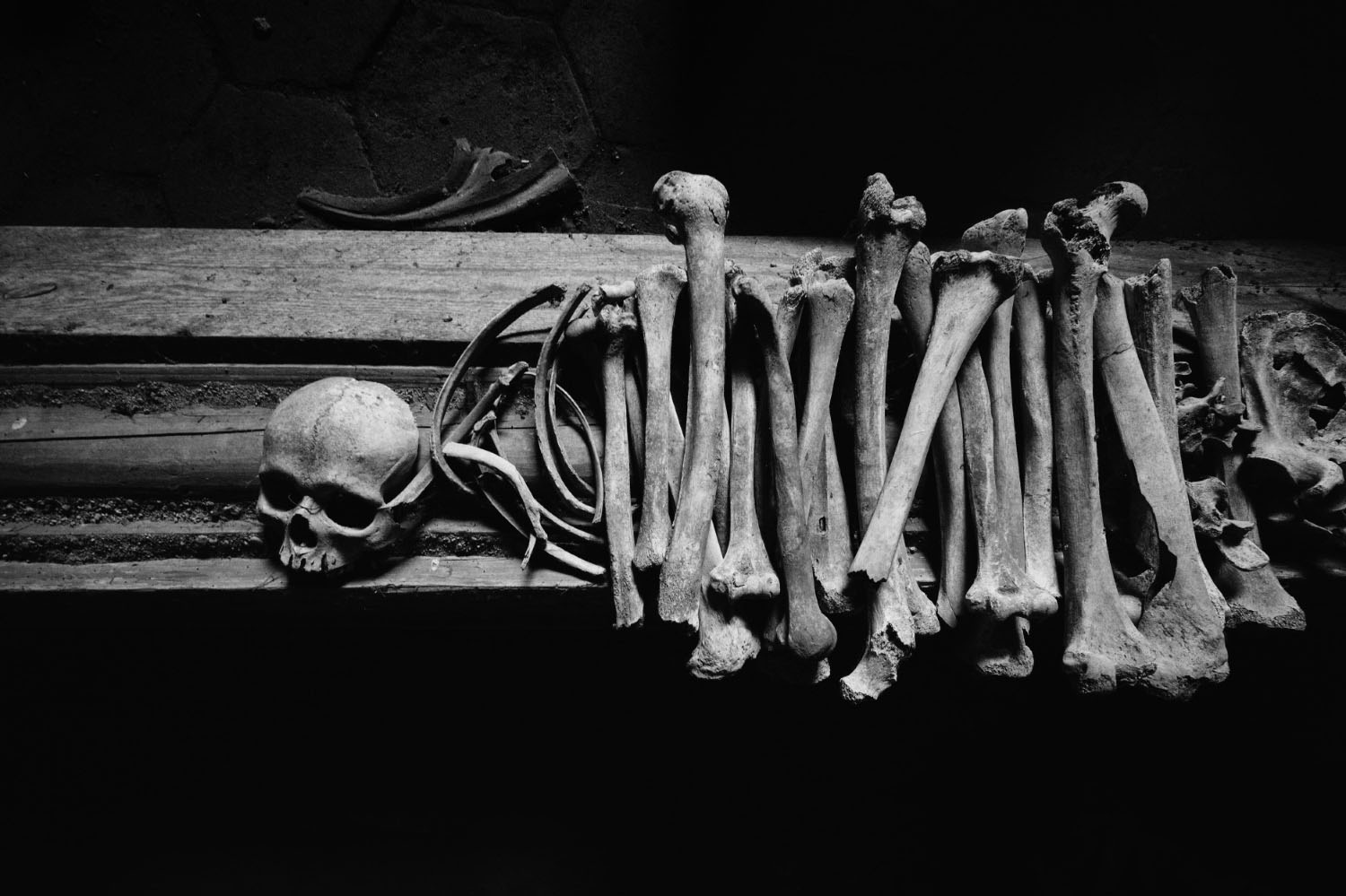Moments of Silence – Czech Ossuaries in Photography
I stand alone in a darkened room. I absorb the atmosphere of the place. The silence. Reconciliation. Slowly, I get into motion. I watch the light, the shapes, while many empty eye sockets watch me. Bones and skulls are towering up. Witnesses of the ancient past. They speak of transience, of faith. They reveal the roots of our history. I will spend several hours in their company today and will return here again and again. In order to capture the extraordinary beauty, the atmosphere, the history.
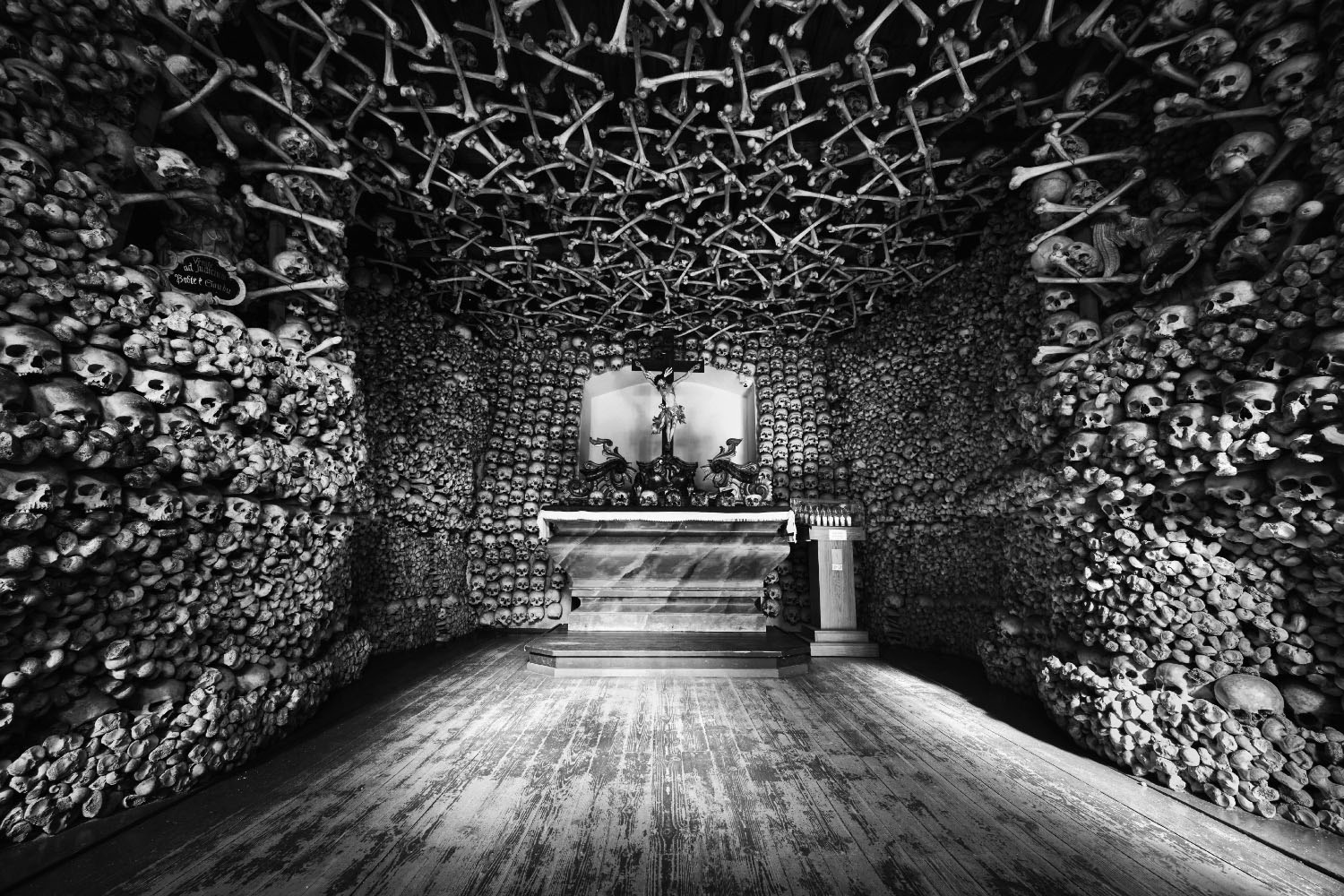
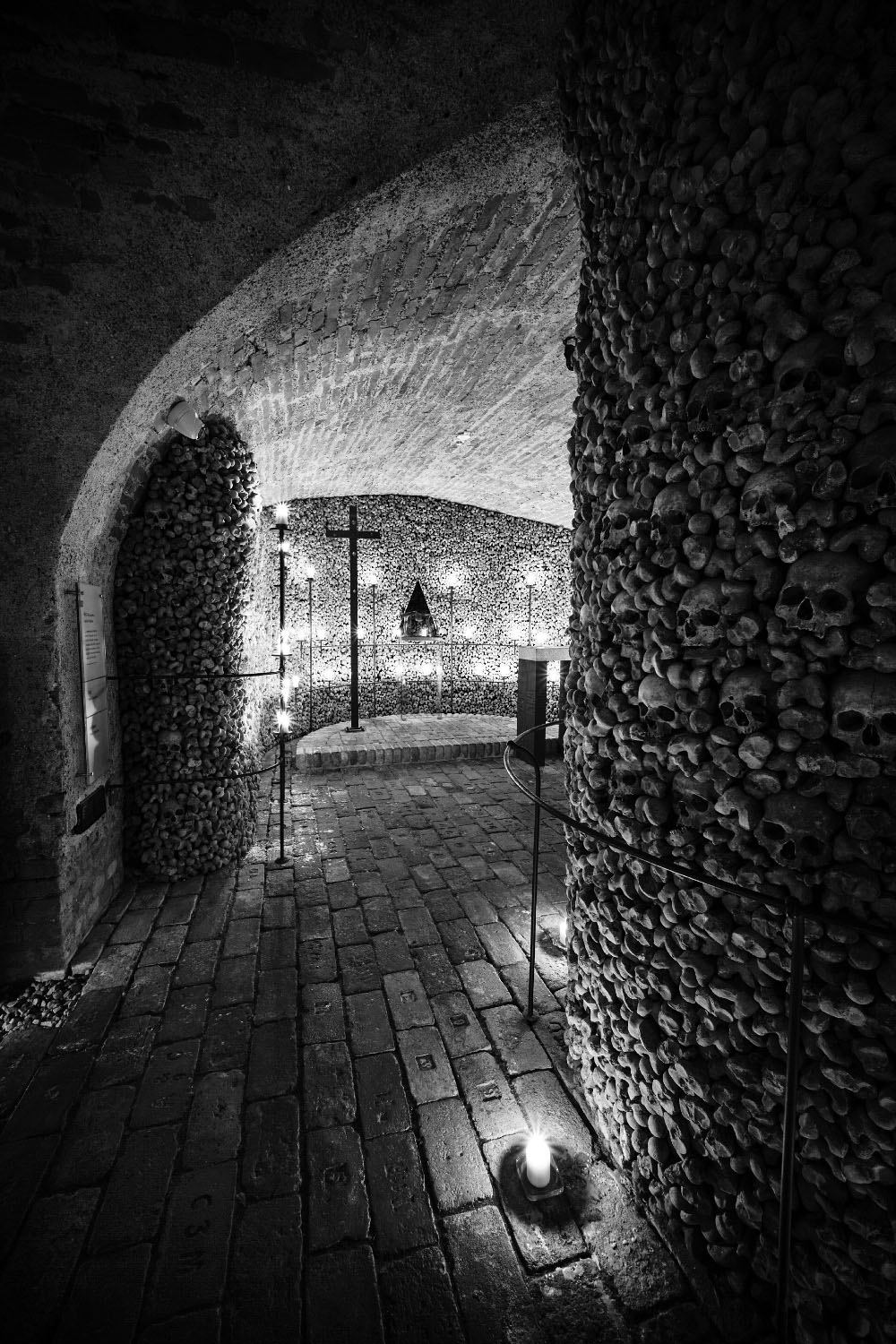
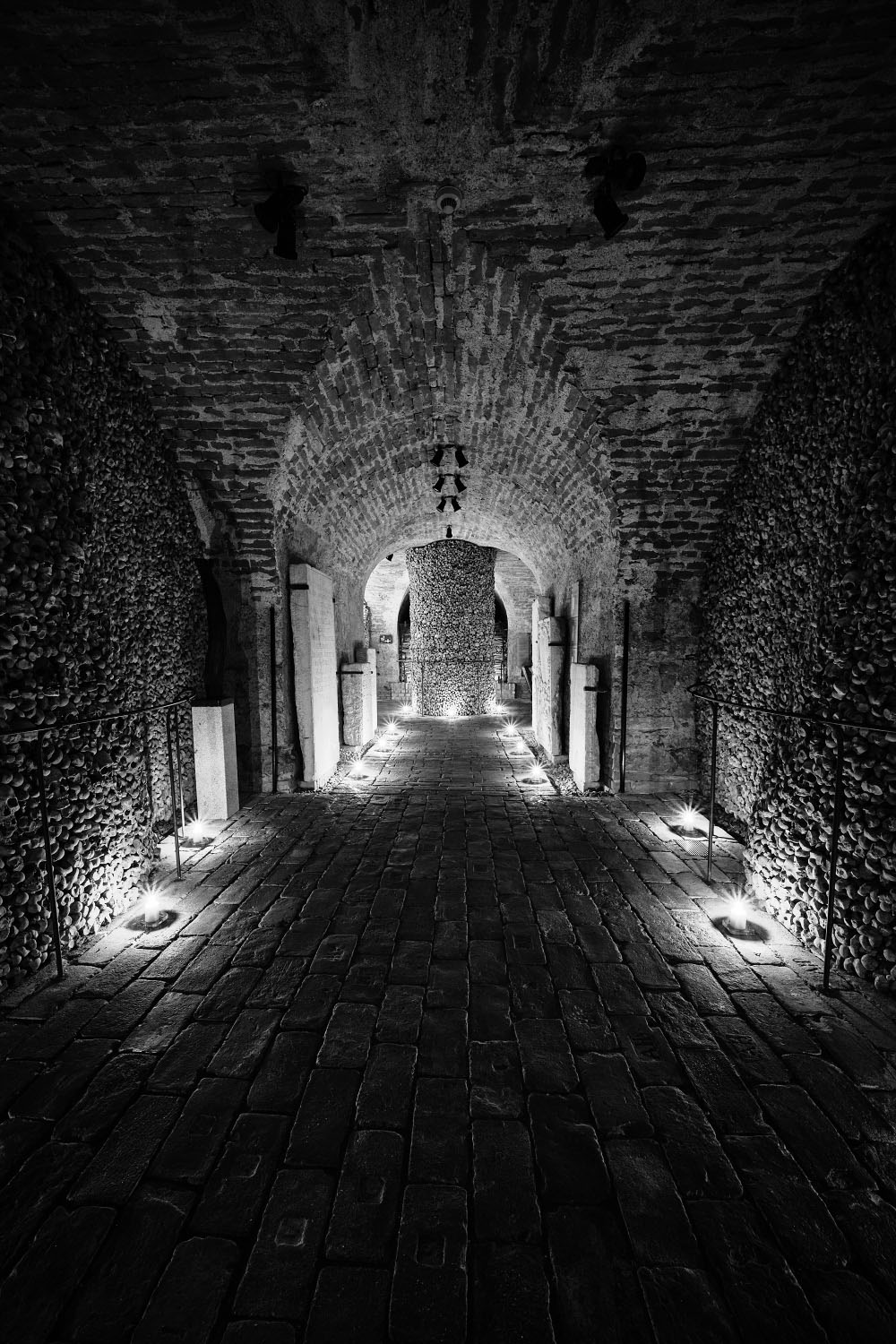
RIGHT: Fuji X-T30 . @16mm . 15″ . ISO 160
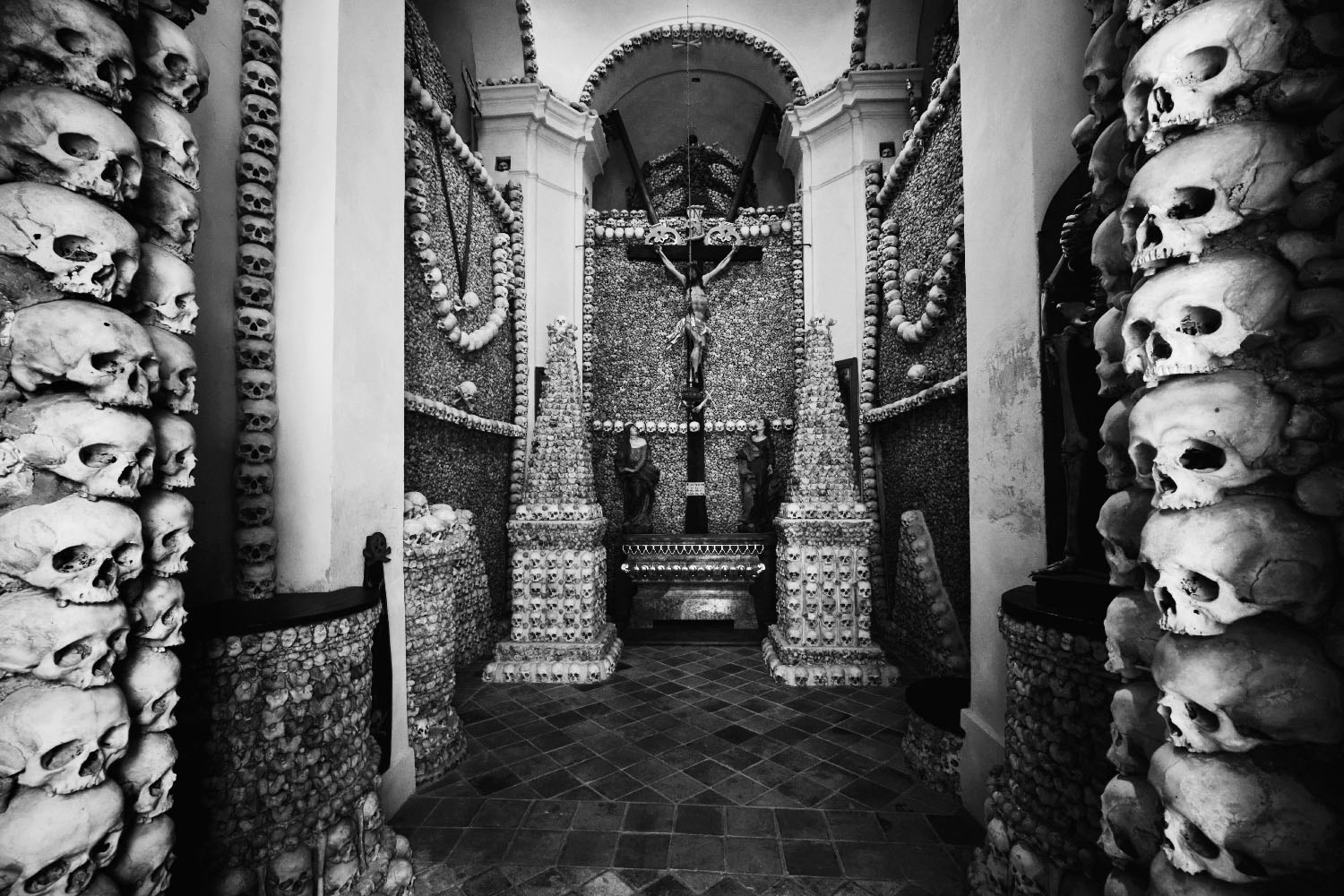
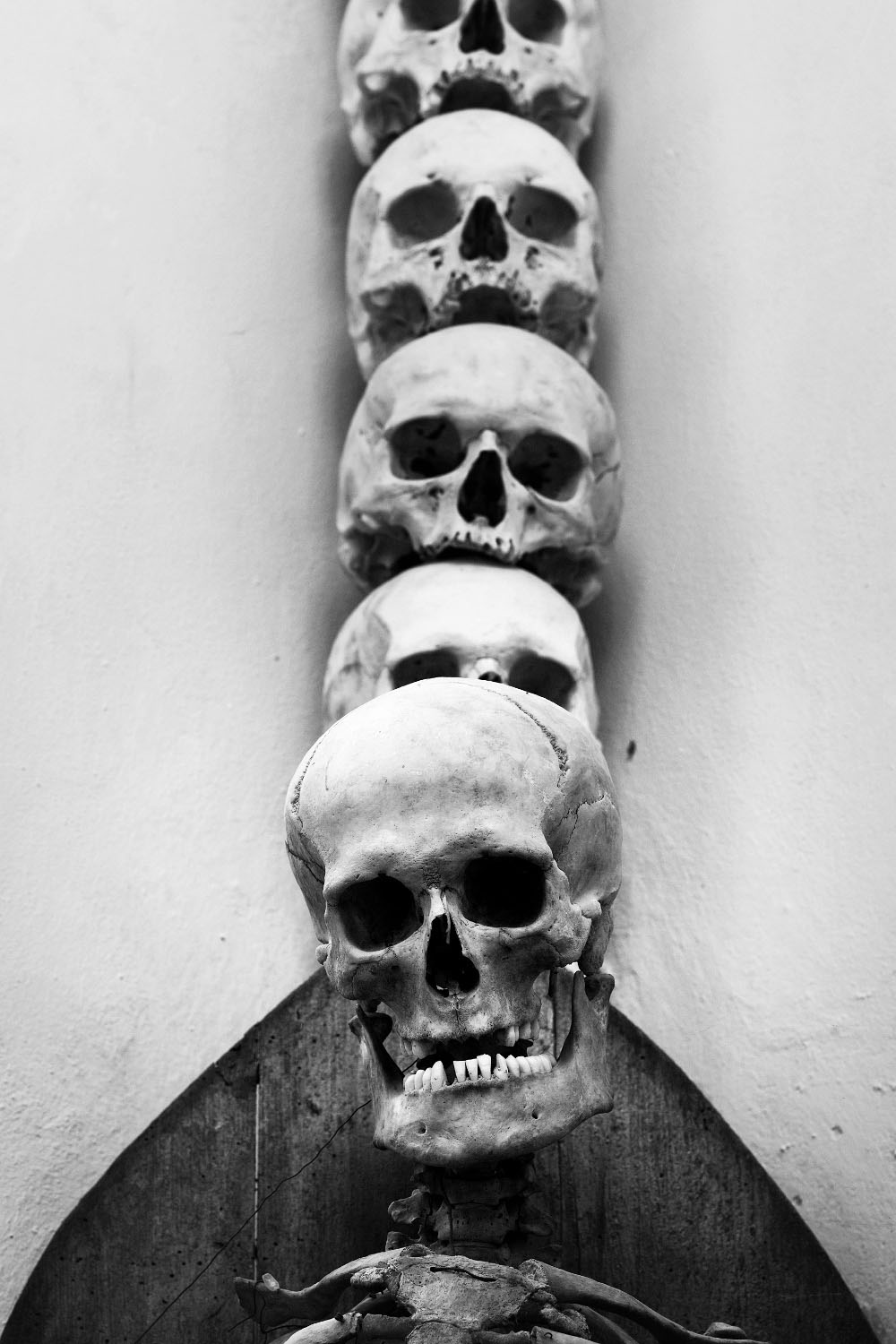
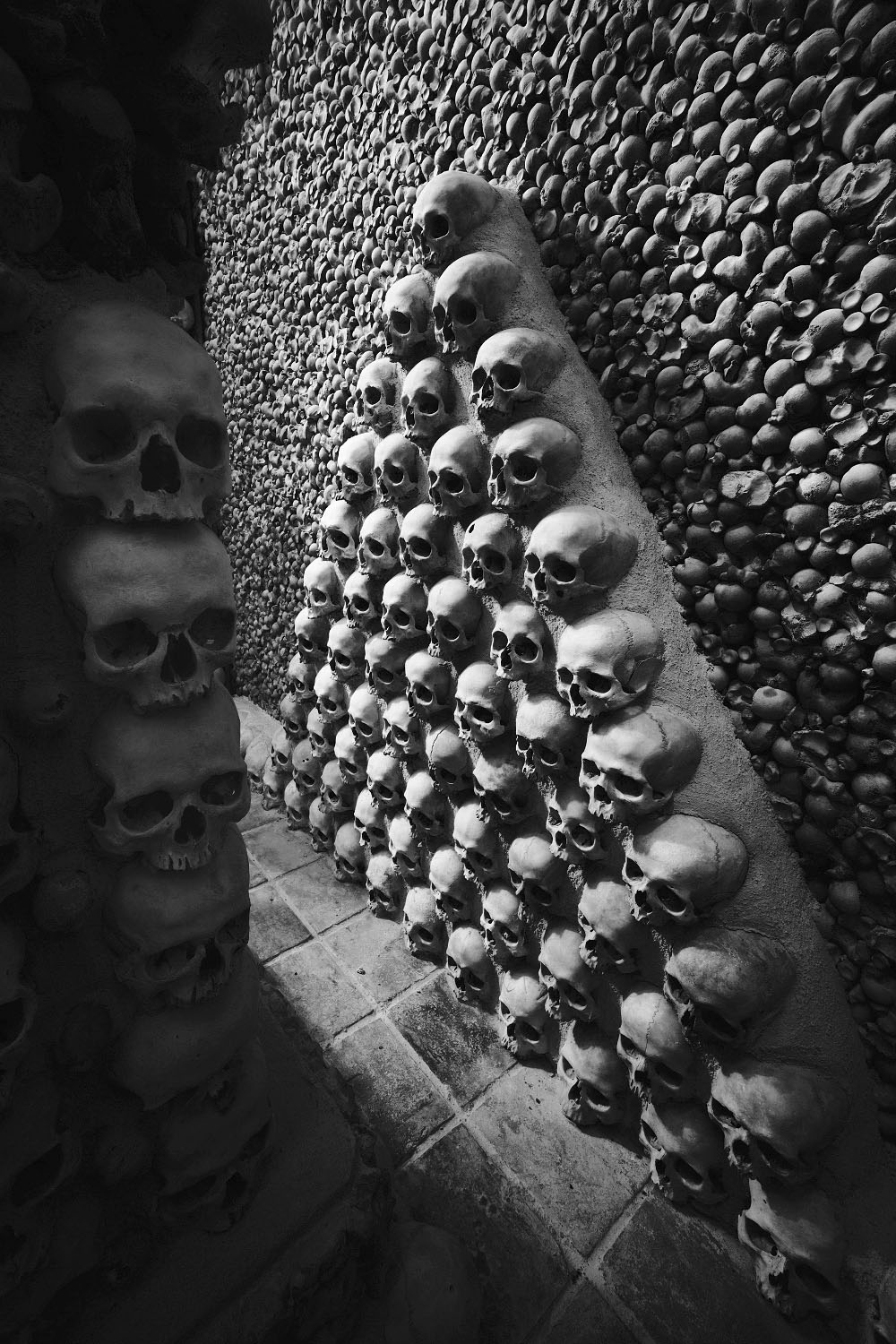
RIGHT: Fuji X-T30 . @9mm . 40″ . ISO 250
I embarked on this project to record places that have largely disappeared, a phenomenon of which only fragments have survived to this day. Sometimes decaying, sometimes fortunately maintained. The ossuaries.
The idea of documenting Czech ossuaries had been around for a long time. This idea was conceived many years ago when I was already photographing old cemeteries, tombstones and funeral statues. Thus began the Moments of Silence series (I wrote about it on FXP some time ago), which was to be expanded to include ossuaries.
I wanted to document Czech ossuaries first, but not to limit myself to documenting them. I wanted to give the photographs an artistic overlay. To approach ossuaries with all the reverence that these places require.
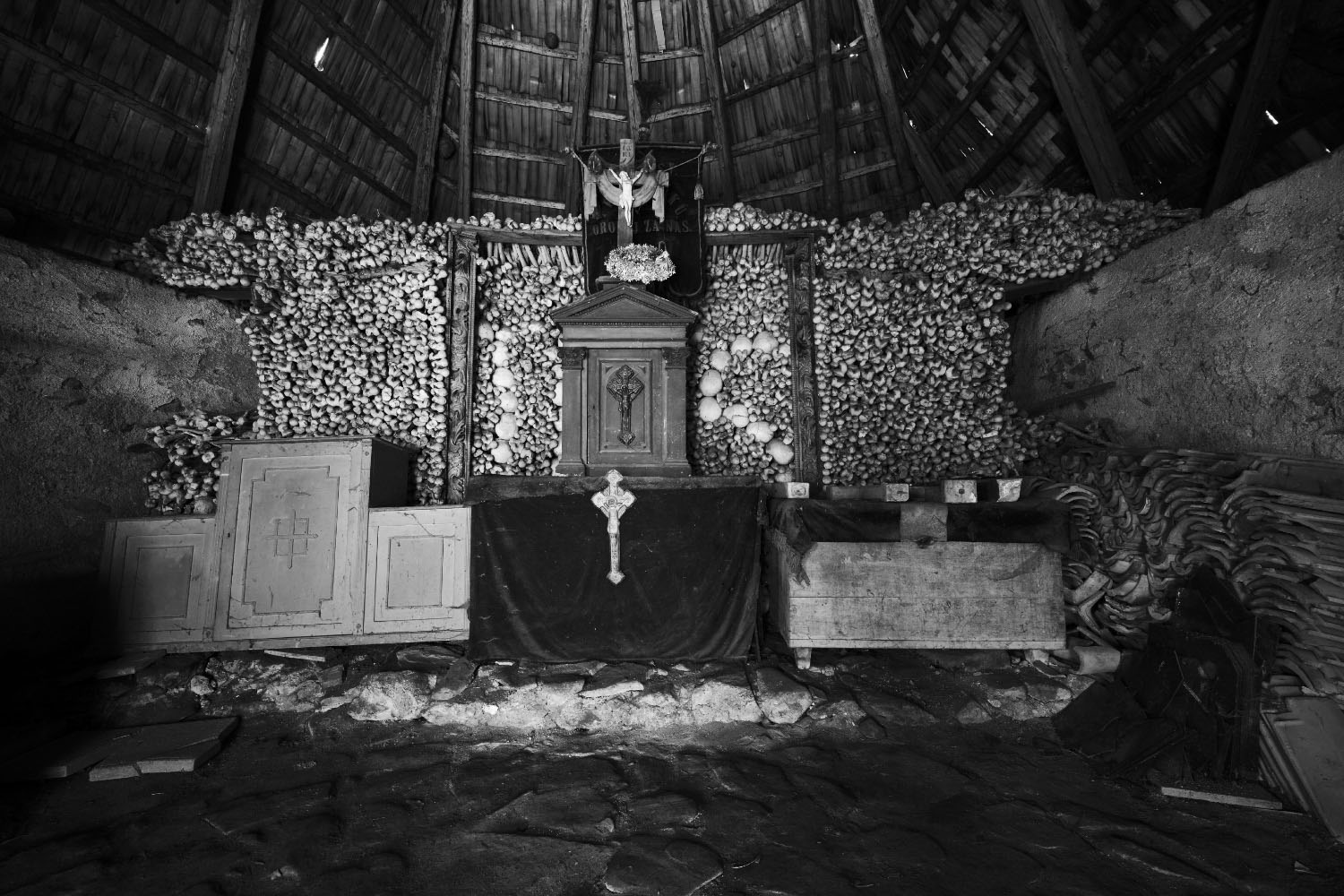

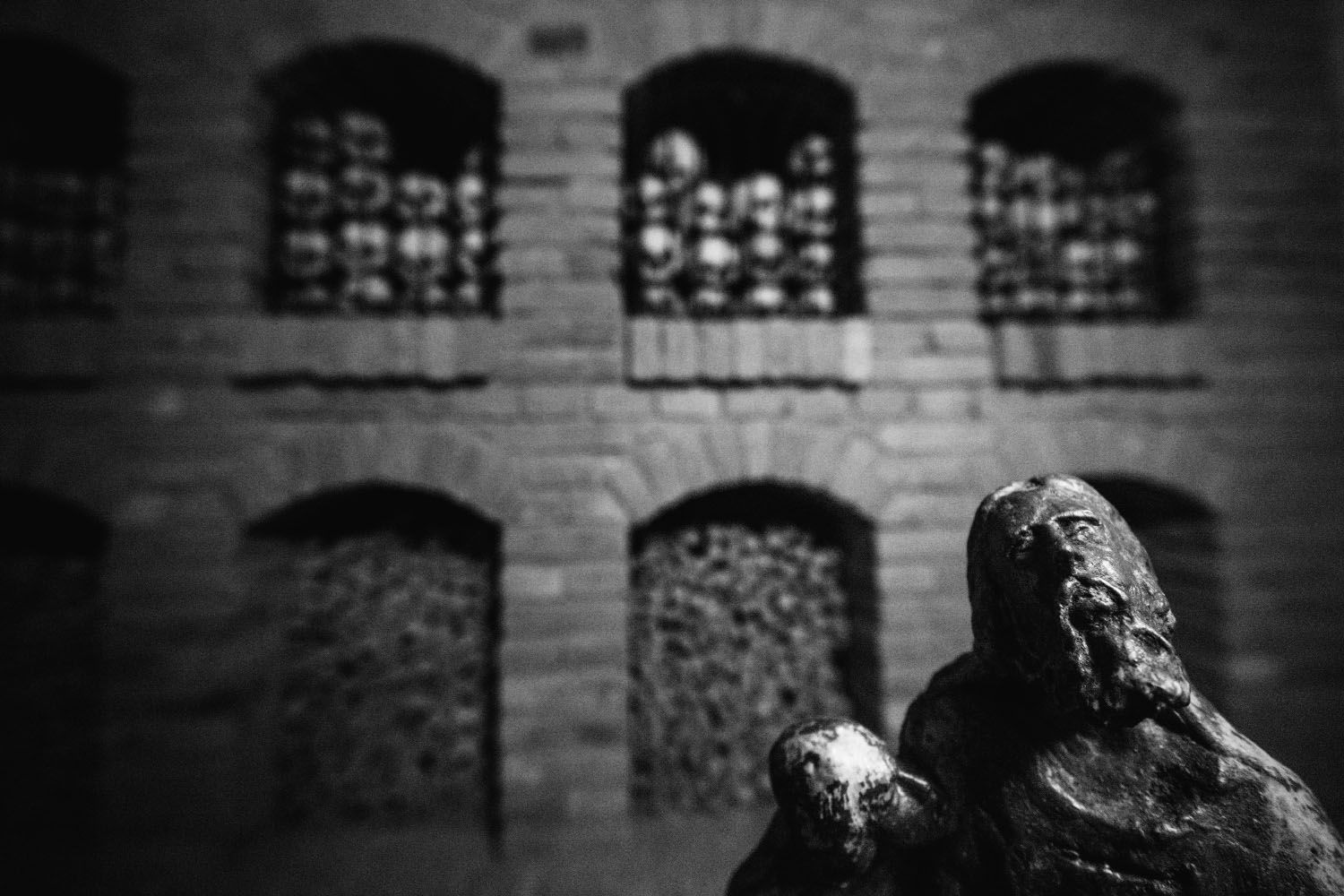
RIGHT: Fuji X-T30 . @9mm . 1/30″ . ISO 1600
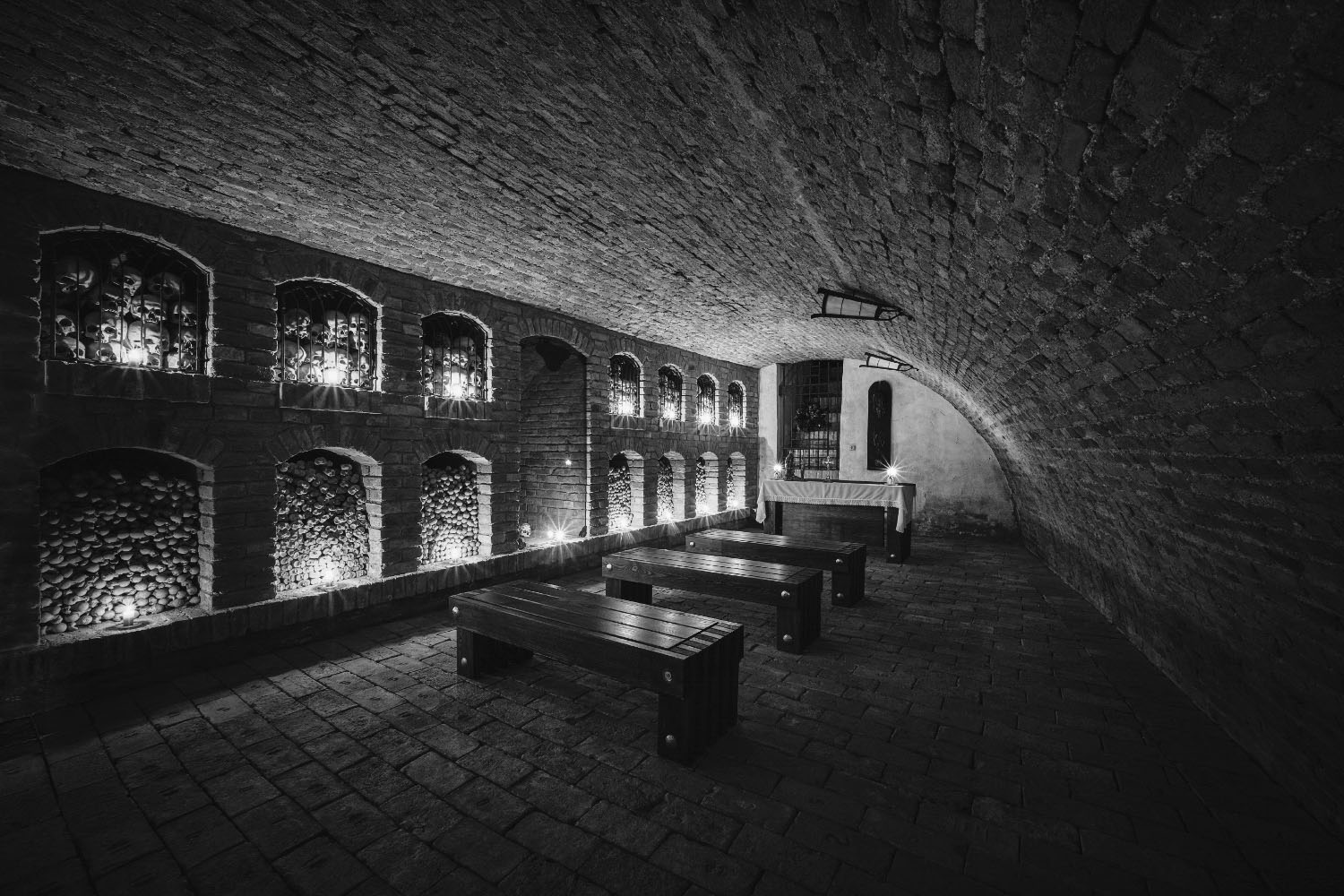
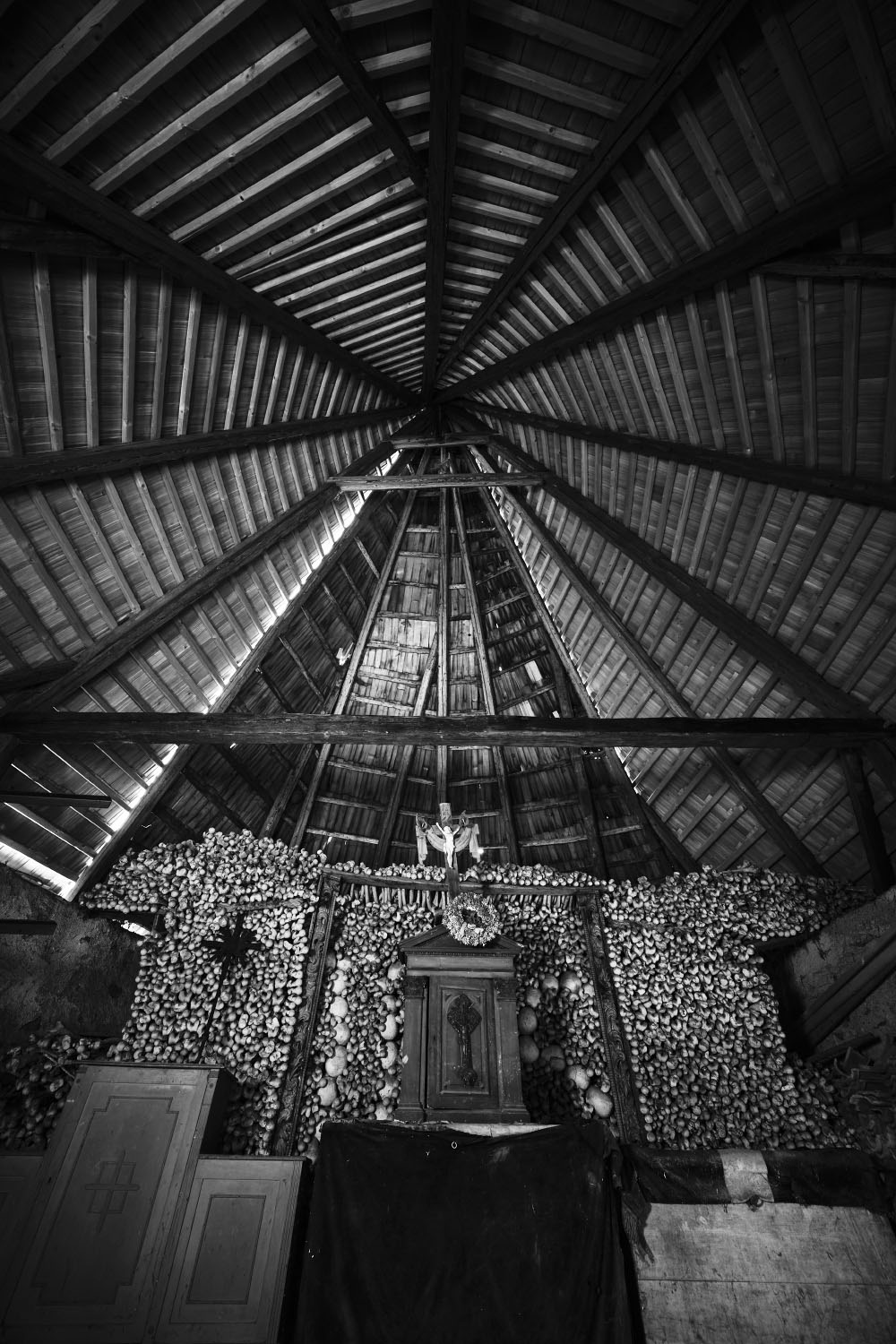
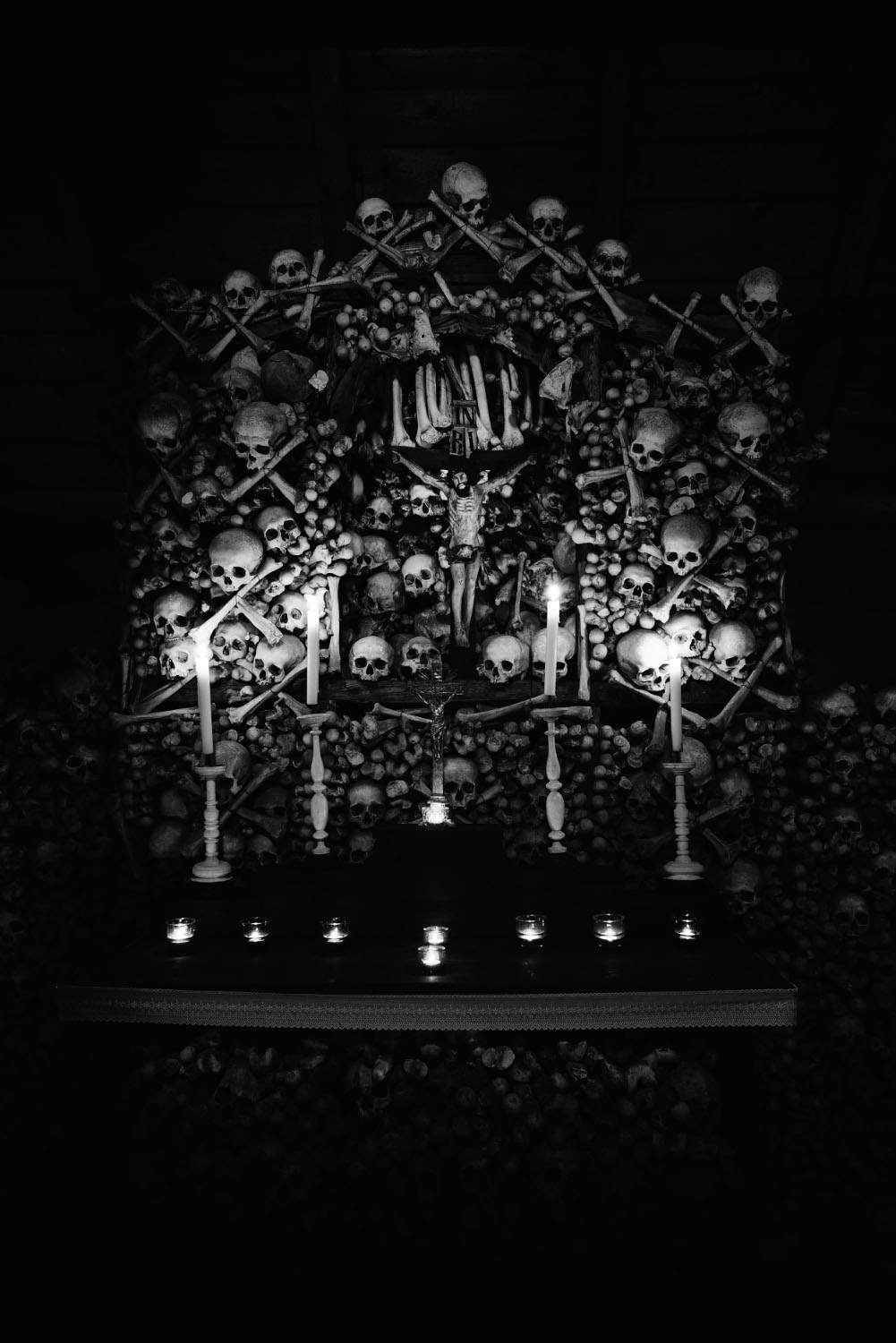
RIGHT: Fuji X-T30 . Fuji XF16mmF2.8 . F/8 . 3.0″ . ISO 160
But I waited a long time, I didn’t feel that it was the right moment to start the project. I wanted to make sure that I would be able to capture the ossuary really to my liking. The longer I photographed, the more experience I gained and with it, the self-confidence and also the certainty necessary for such a large-scale project. Until one day the right moment came to start photographing ossuaries.
It was probably the logical outcome of the fact that I had been interested in the topic of death and sepulchral art since teenage. Besides, I have been visiting the most famous Czech ossuary, Kutná Hora – Sedlec, every year since 2003. I observe how much work has been done to save it, how much has been repaired and how the work is still going on to preserve this unique monument for future generations.

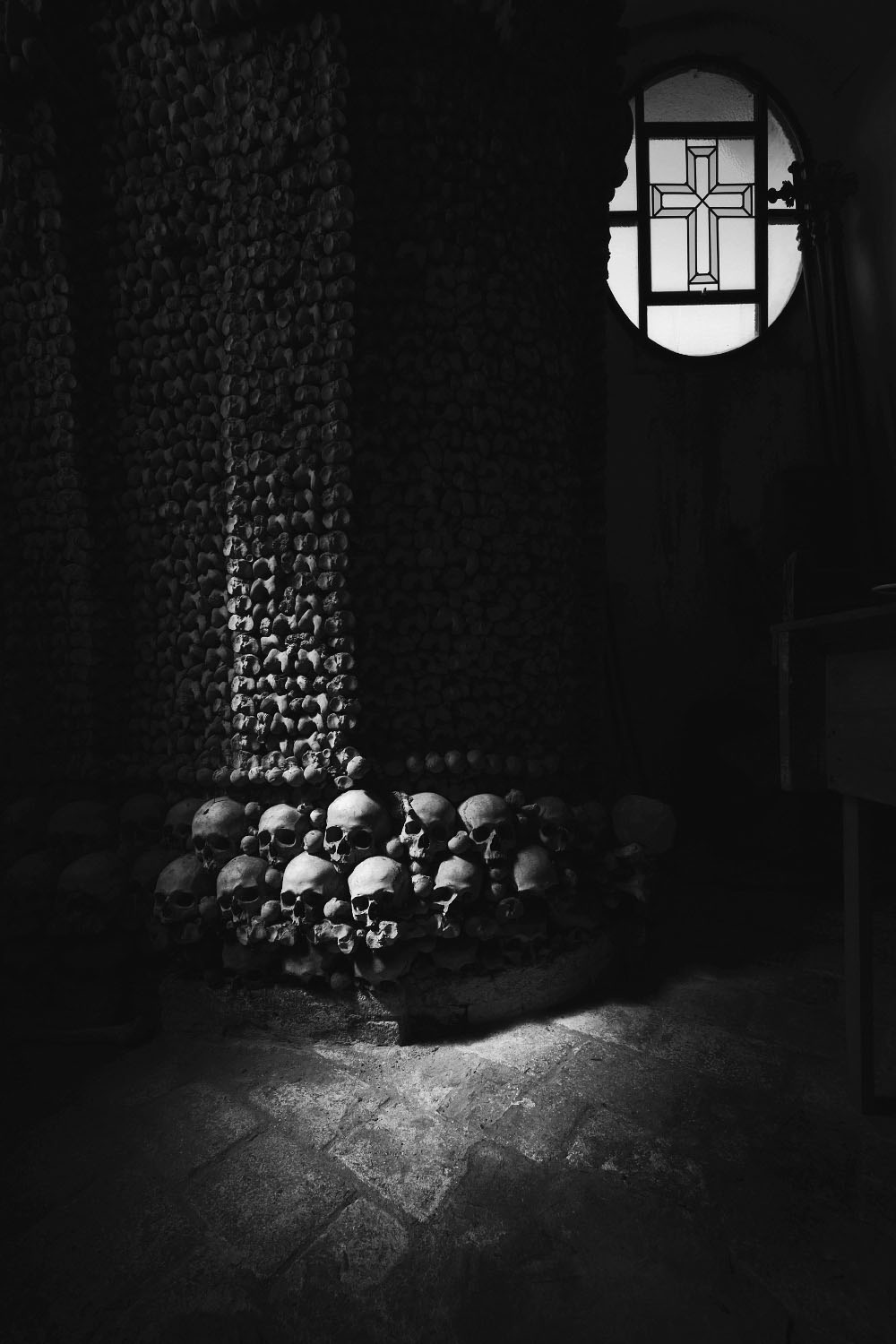
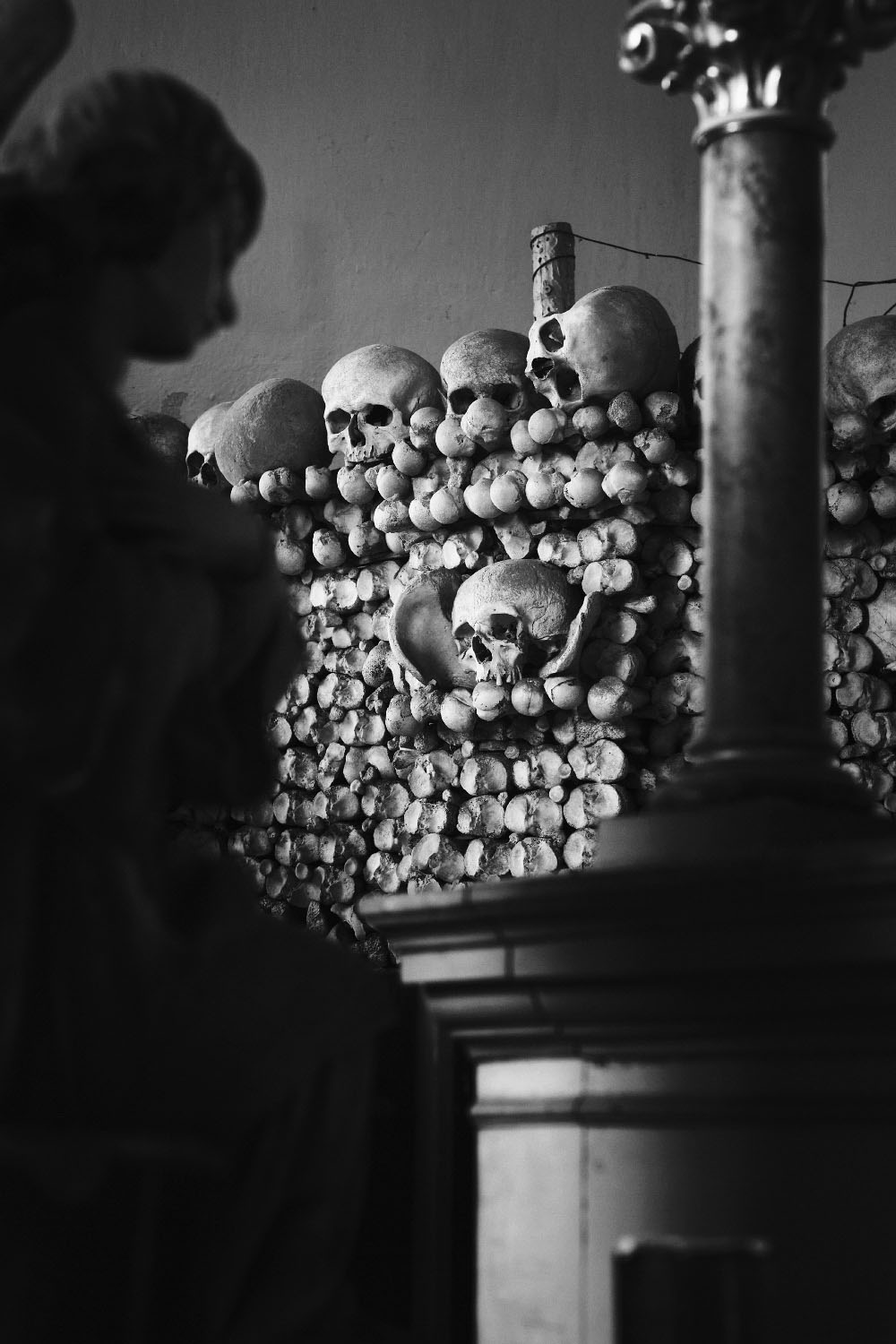
RIGHT: Fuji X-T30 . Fuji XF50mmF2 . F/5.0 . 1/125″ . ISO 640
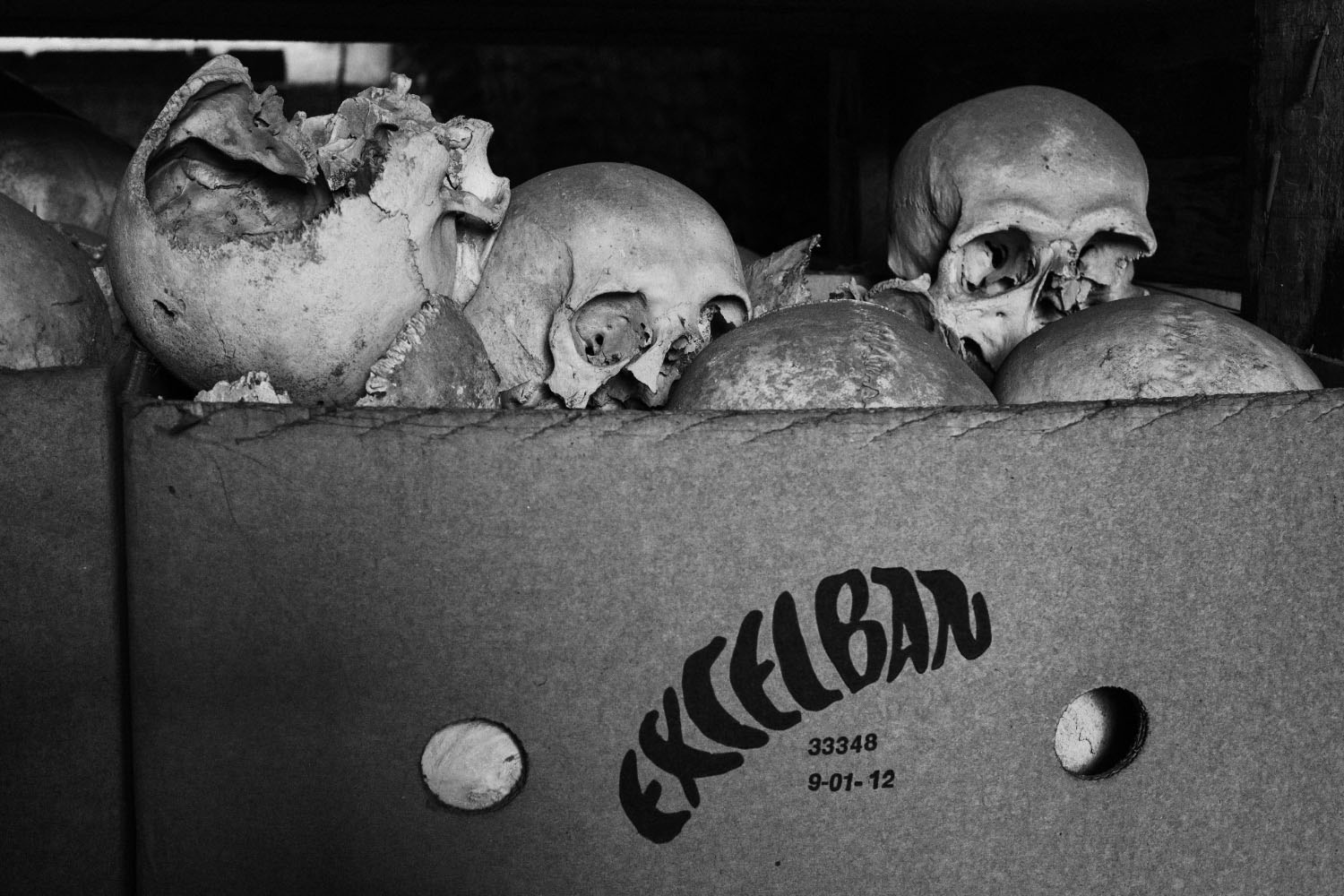
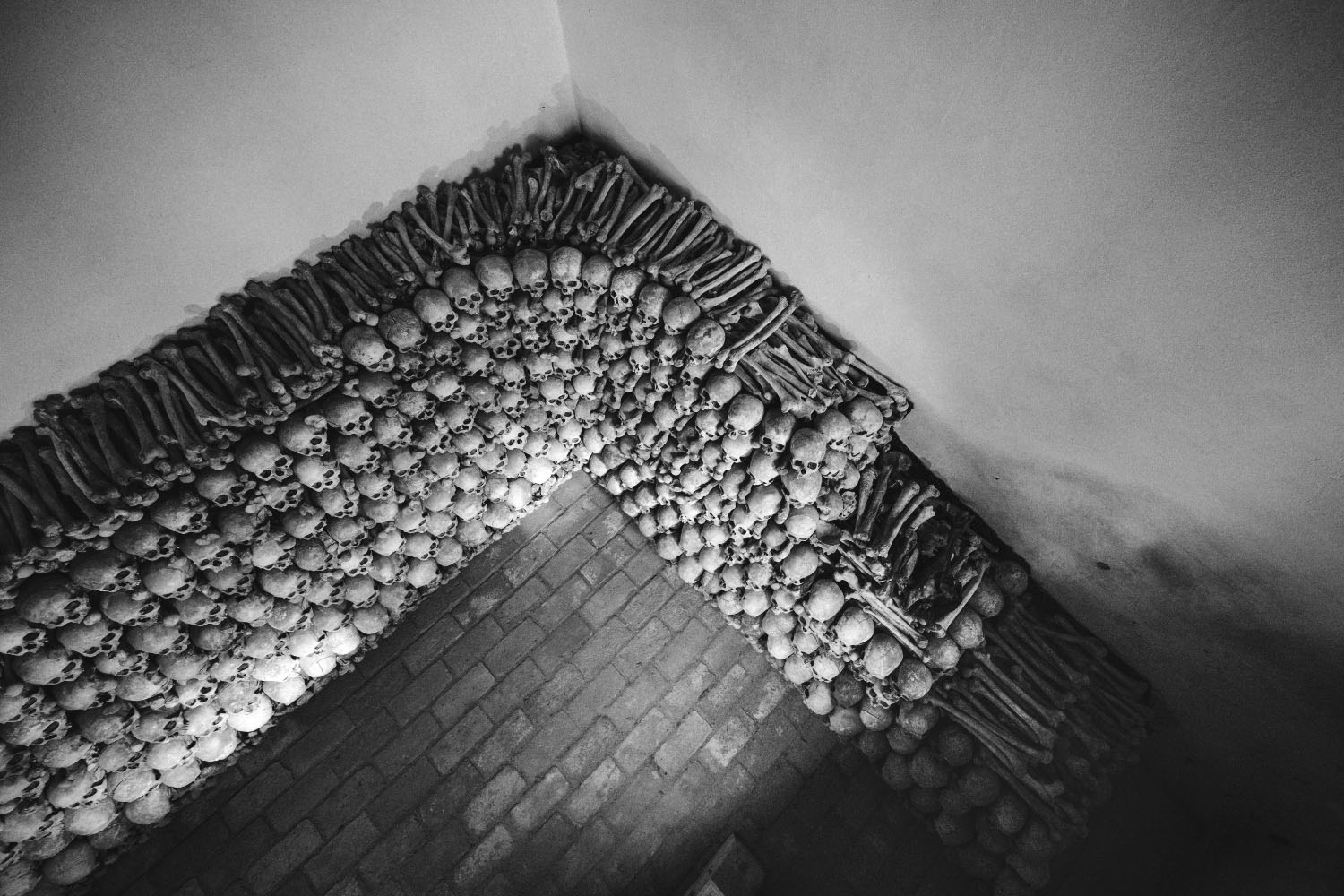

RIGHT: Fuji X-T30 . @9mm . 60″ . ISO 200
However, not all ossuaries are so lucky. That is why it would be good to capture them in photographs. However, many of them are not normally accessible. Which in some cases has necessitated facility permits for visits and photographhs.
Anyway, I have to thank all the ossuaries’ representatives for their helpfulness and for allowing the project to be carried out.
People often ask why ossuaries were created. And it is clear that from the perspective of modern Western civilization, they can sometimes seem hard to understand (because of the shifting perception of death in this society).
But ossuaries are nothing special in the European environment. The first mentions of them appeared as early as the 12th century, and in the course of the 15th century, they became a common phenomenon.
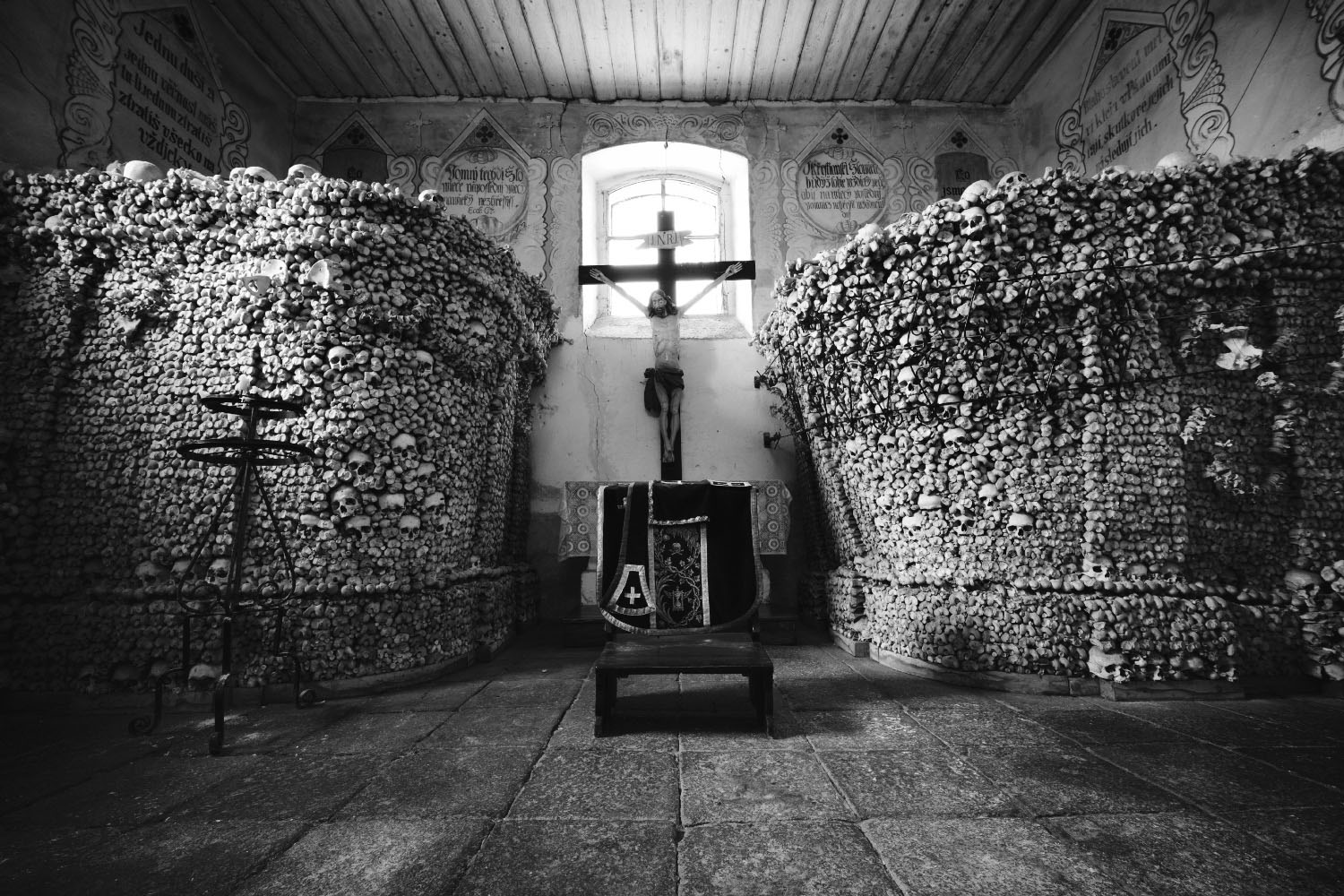
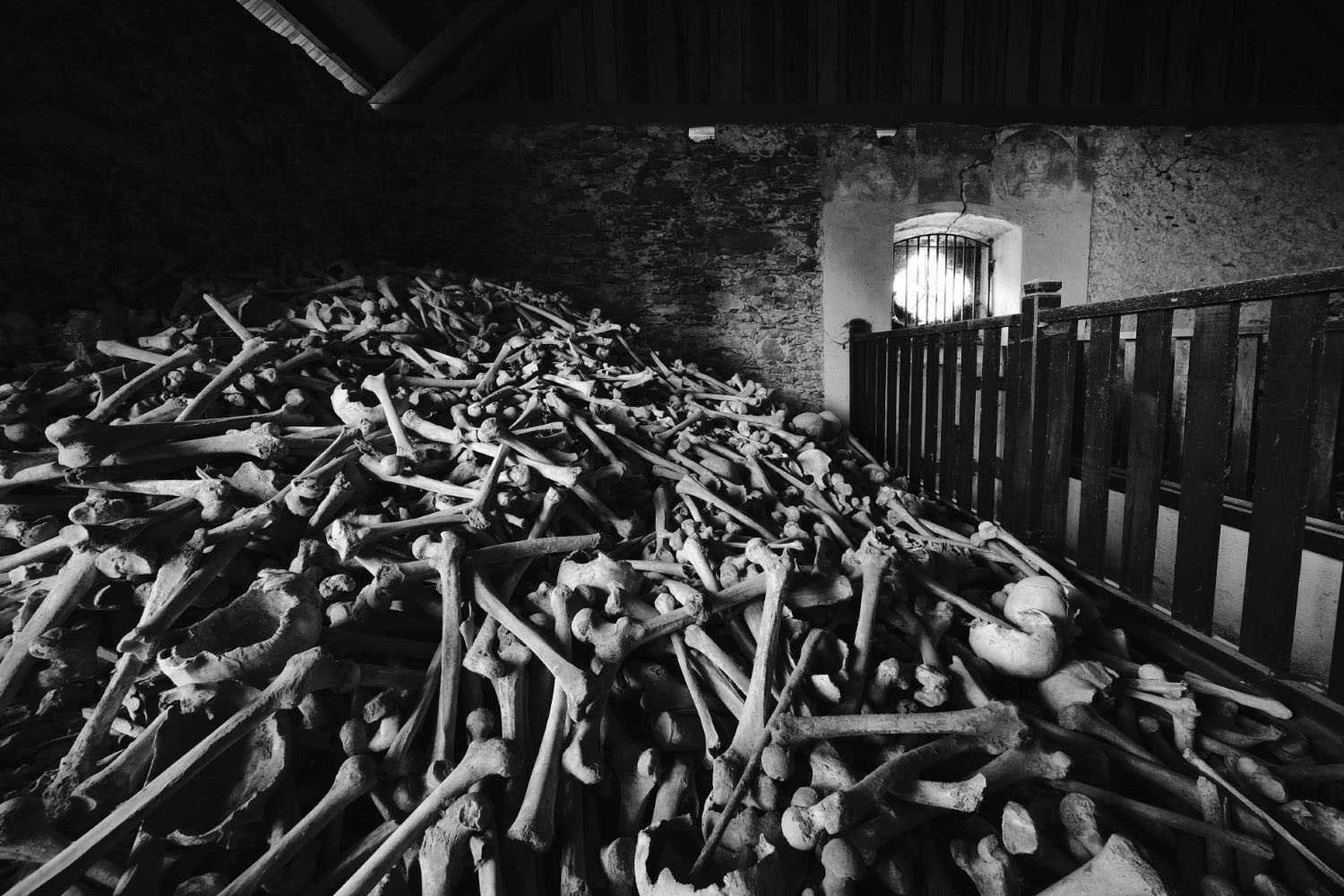
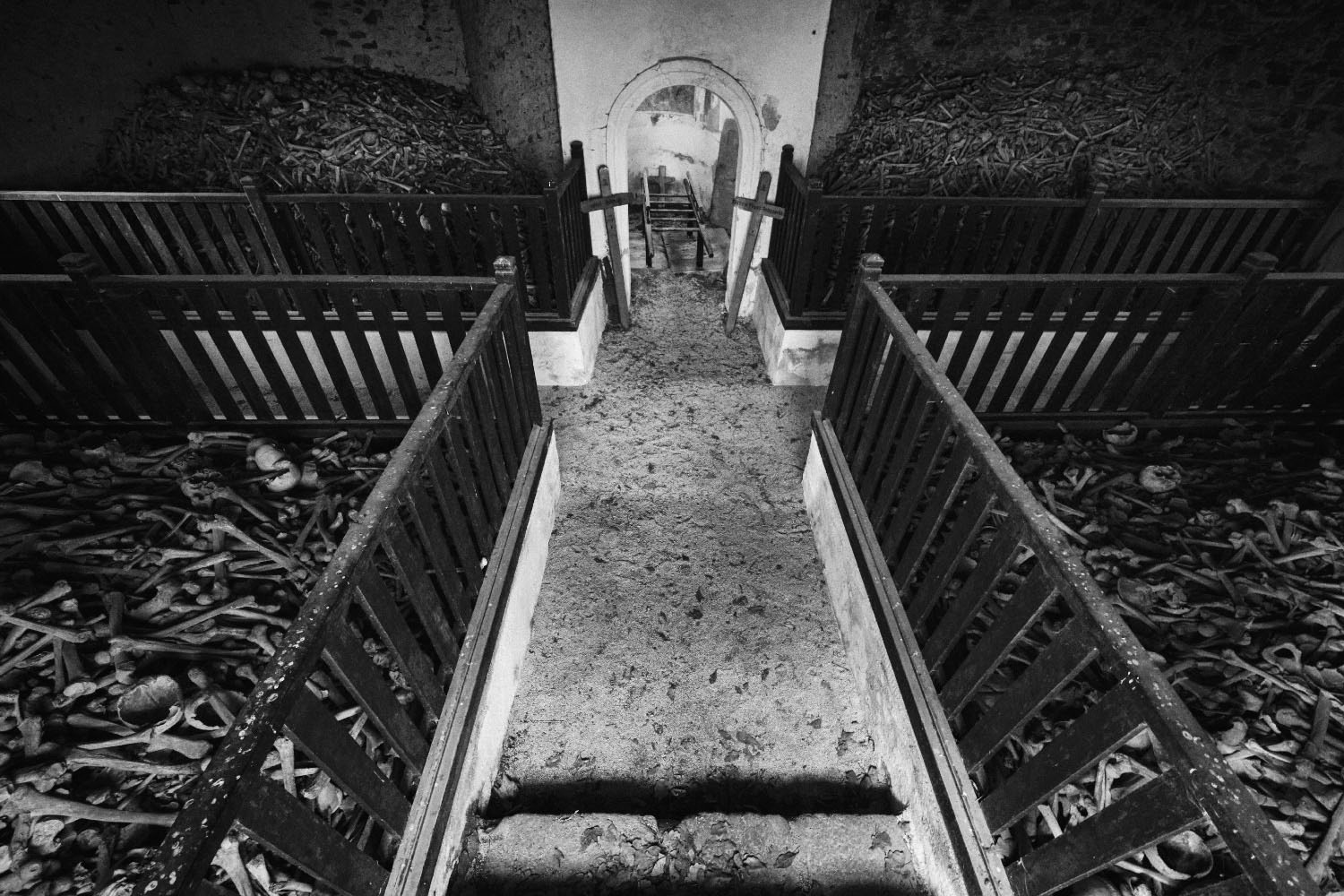
RIGHT: Fuji X-T30 . @9mm . 1/30″ . ISO 2000
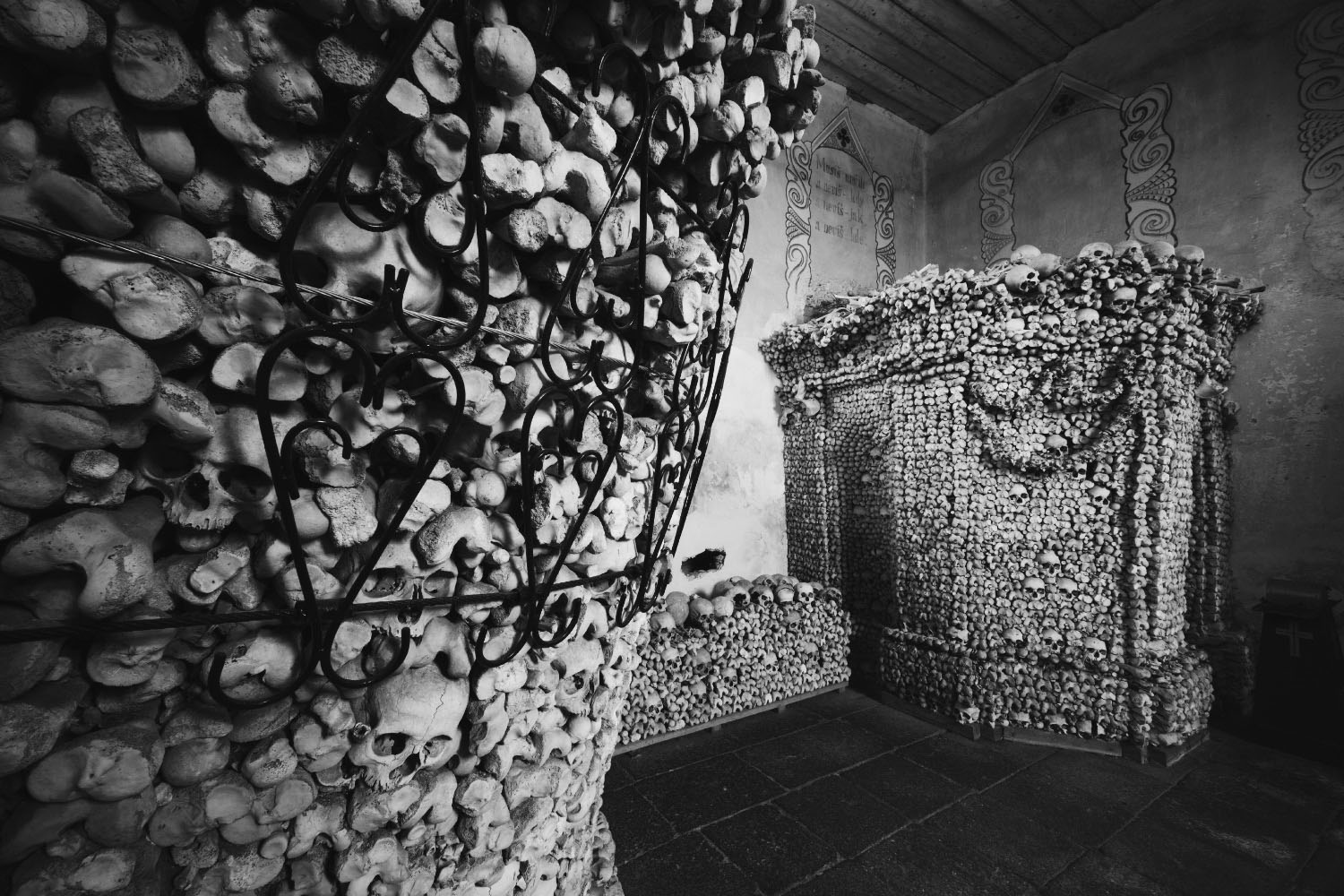
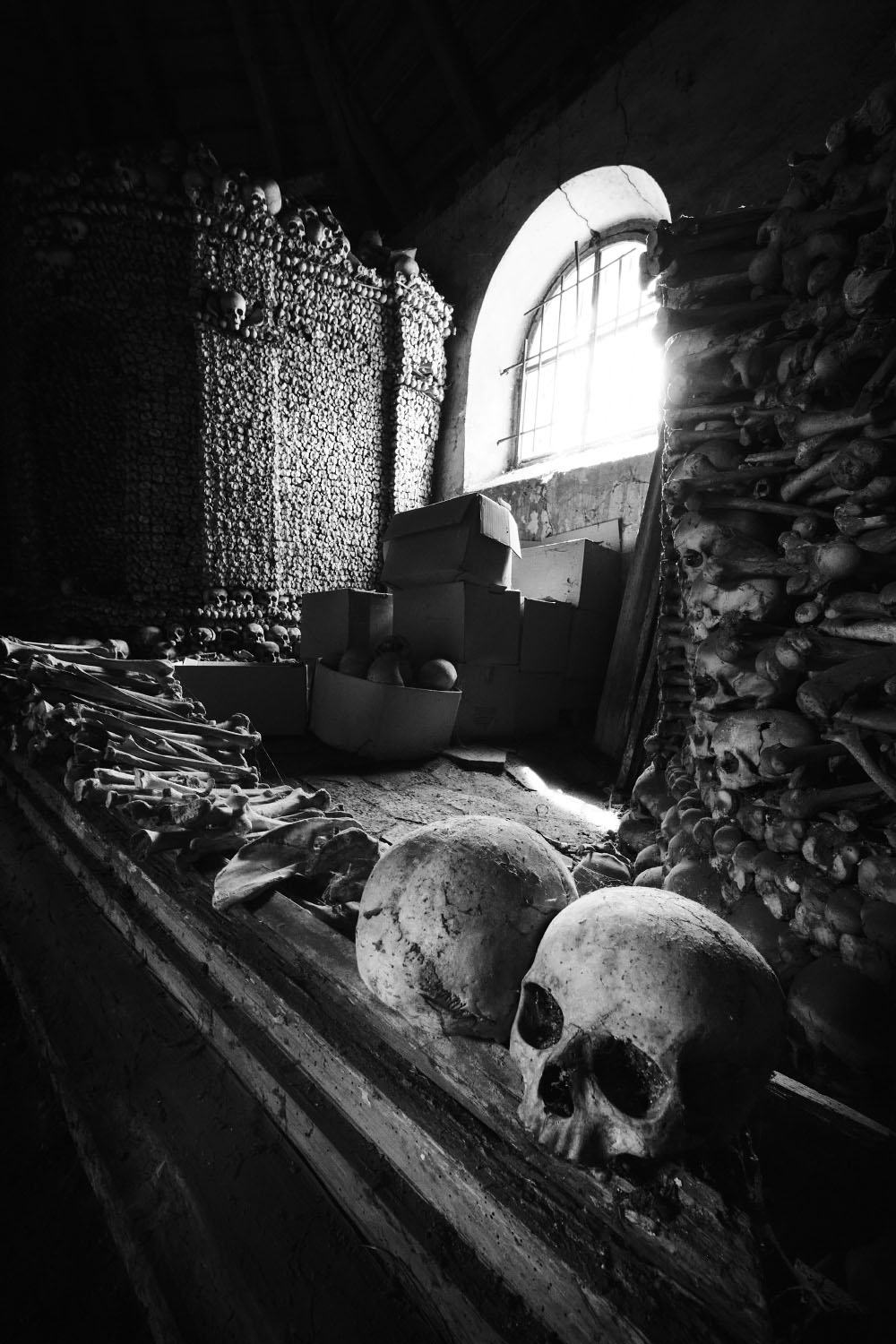
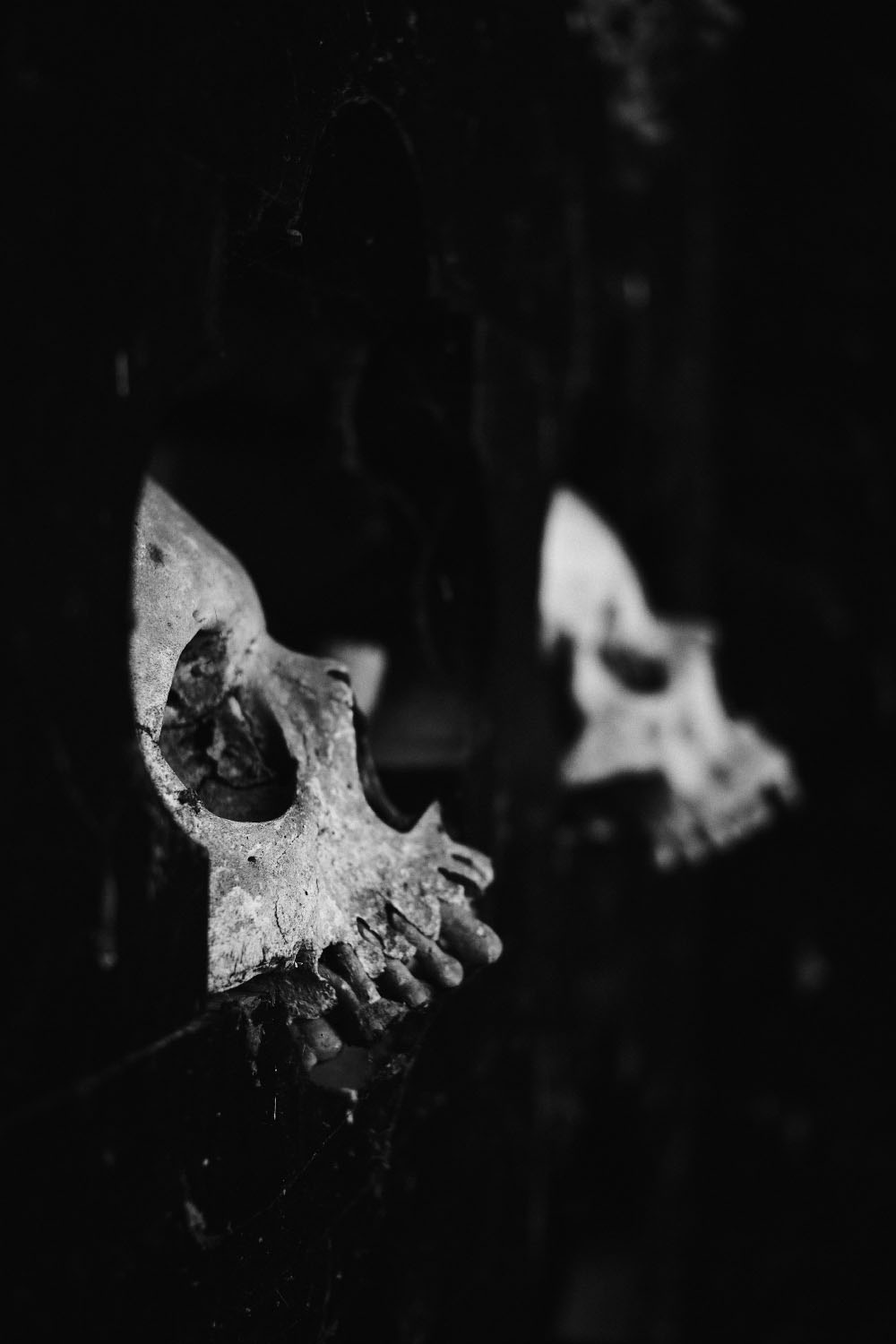
RIGHT: Fuji X-T30 . Fuji XF27mmF2.8 . F/2.8 . 1/60″ . ISO 1000
The formation of ossuaries has two interconnected aspects: practical and religious. Due to the high mortality rate and limited available space in church cemeteries, it was often necessary to make gravesites available for the newly deceased. At the same time, however, exhumed remains from these opened graves had to remain on sanctified ground while awaiting the Last Judgment.
Although ossuaries were initially primarily used as repositories for exhumed bones, their role gradually changed as the perception of death evolved. Remains arranged in a commemorative manner were meant to be a constant reminder of the transience of earthly life and to turn one’s consciousness towards God.
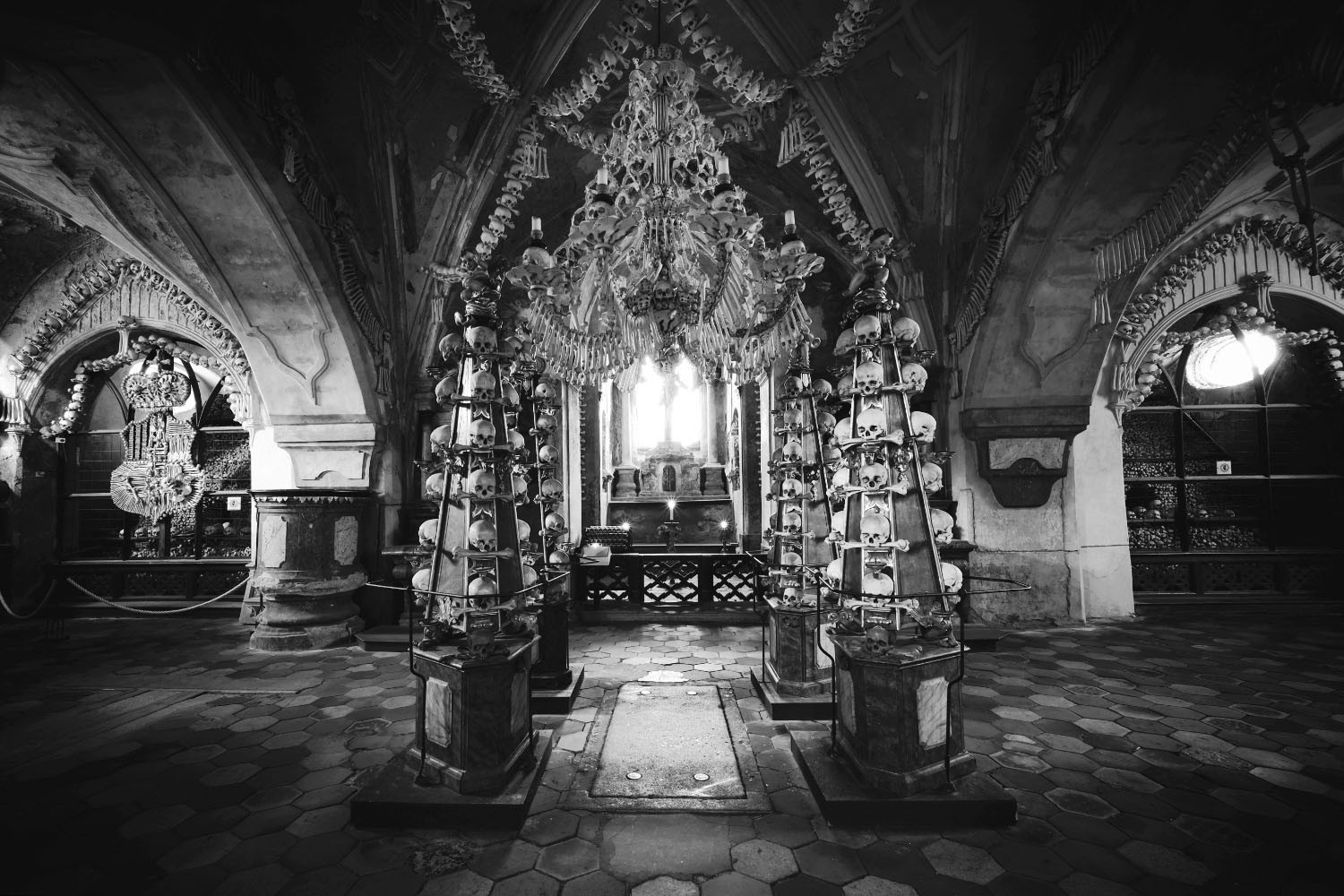
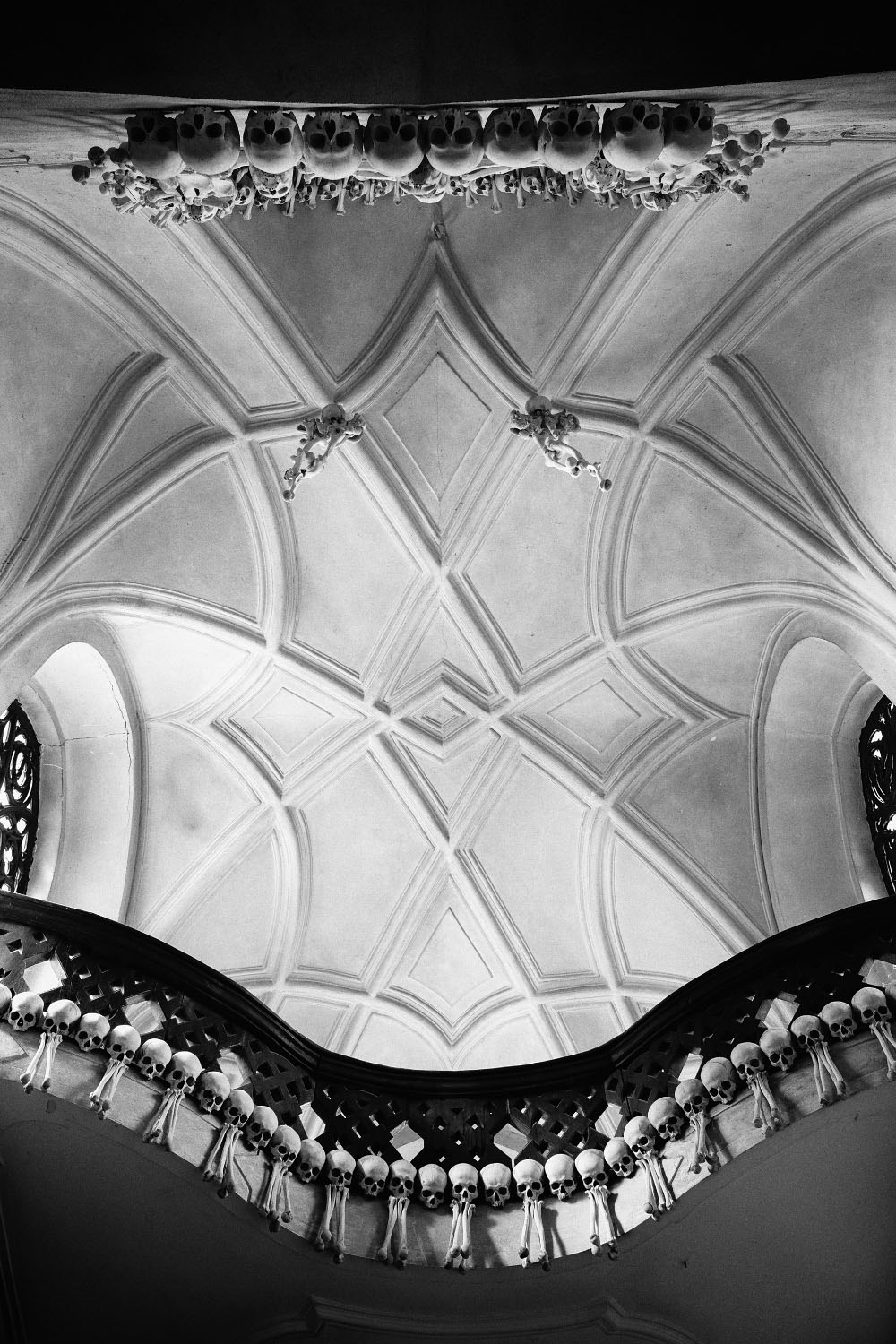
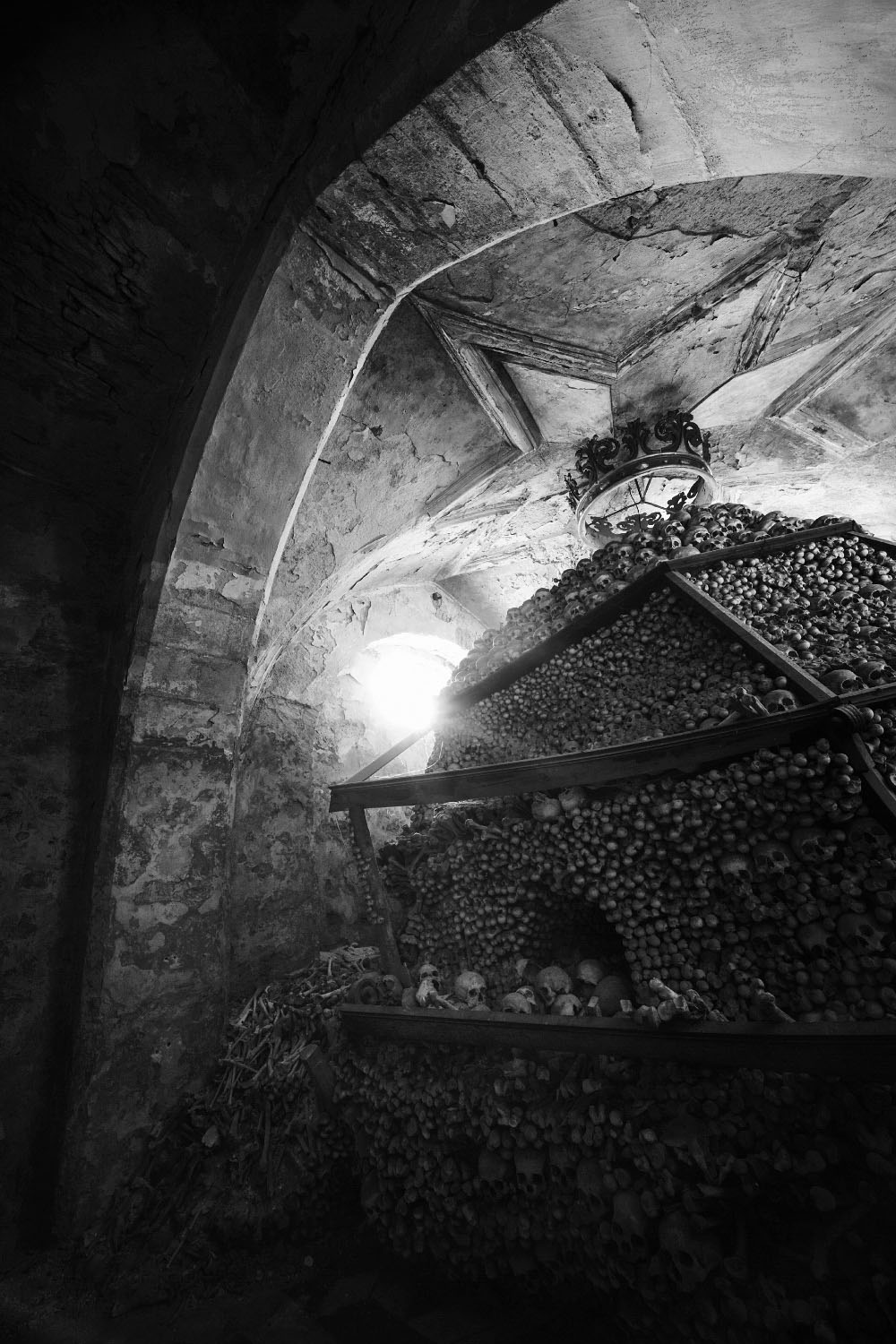
RIGHT: Fuji X-T30 . @9mm . 4.0″ . ISO 200
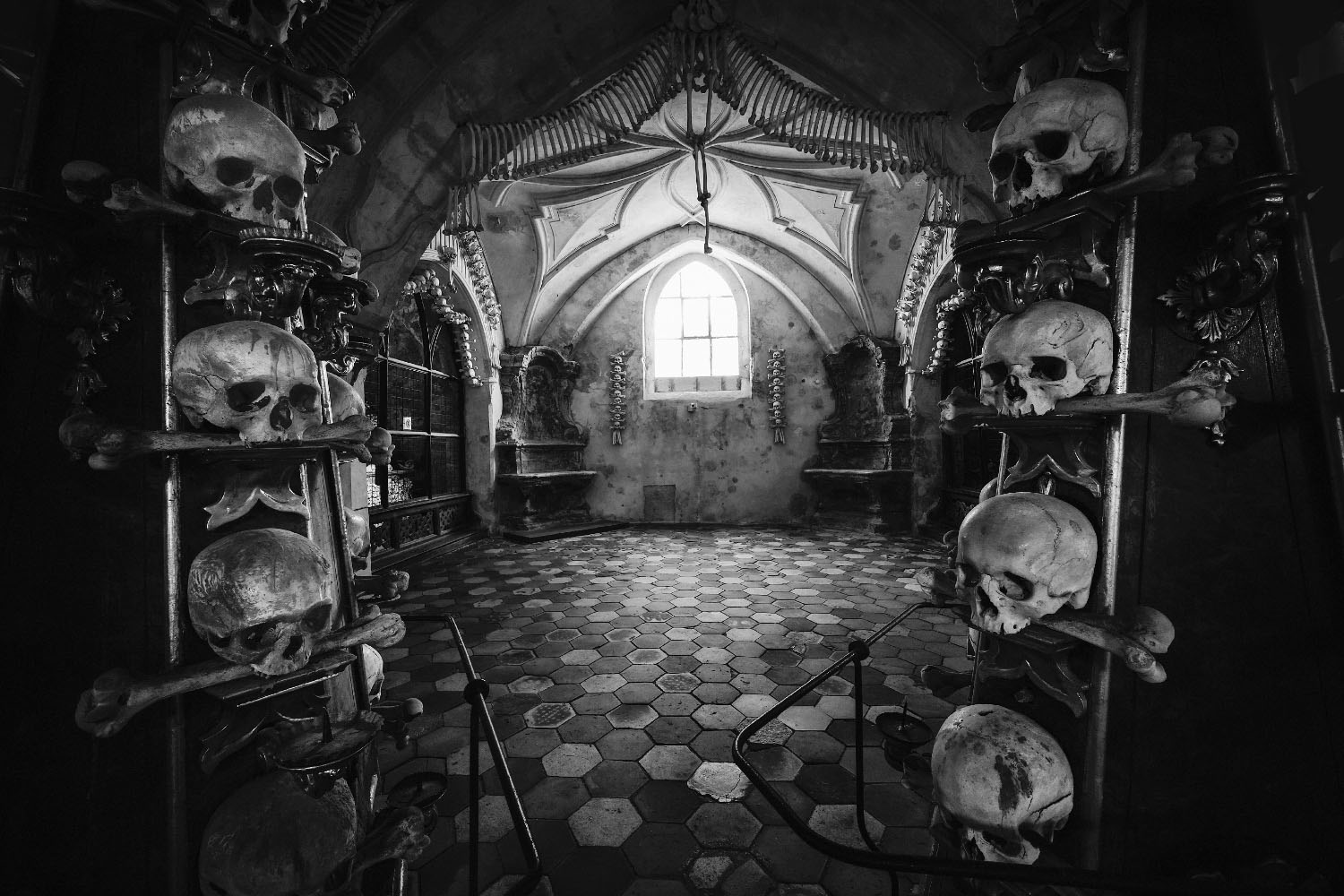
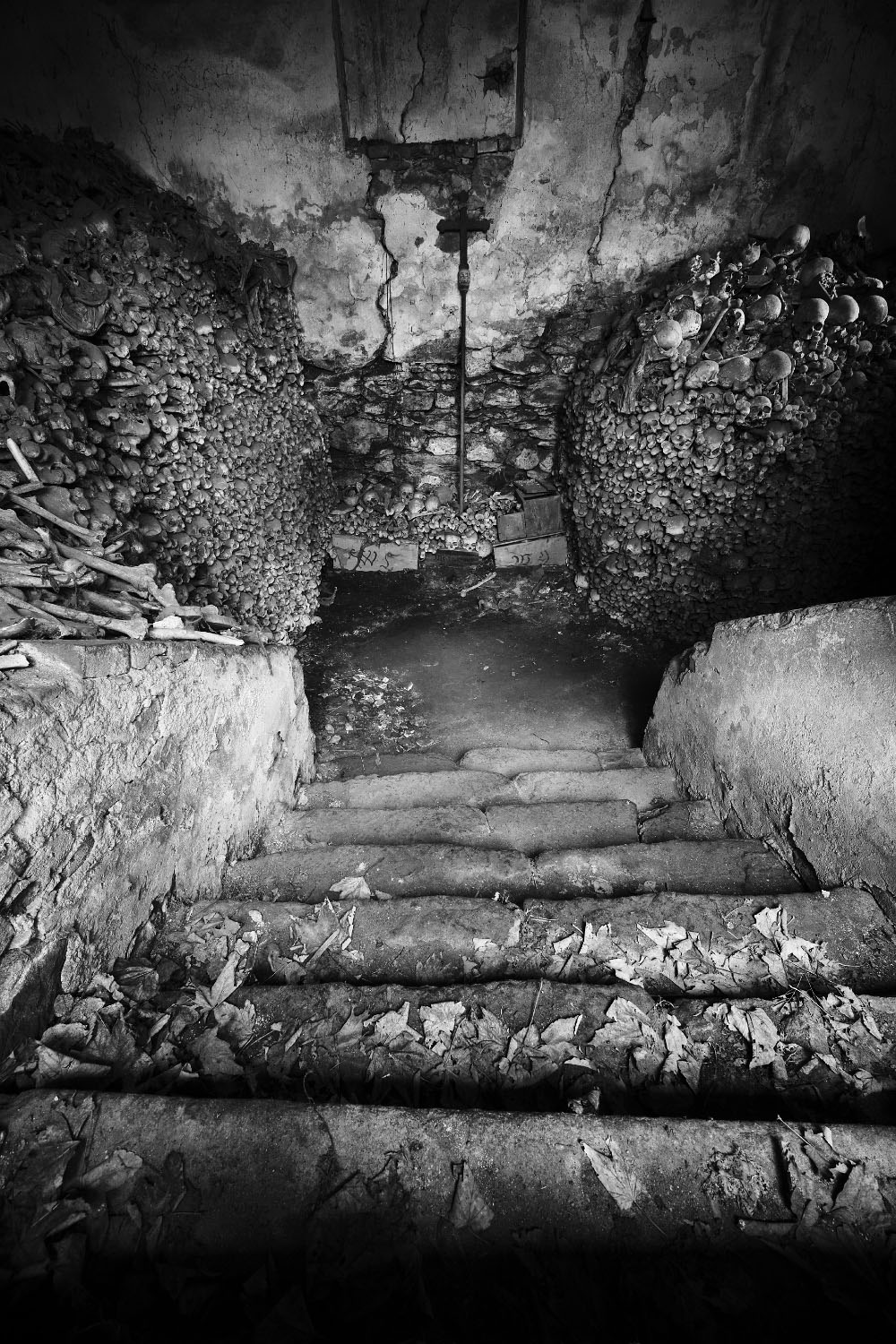
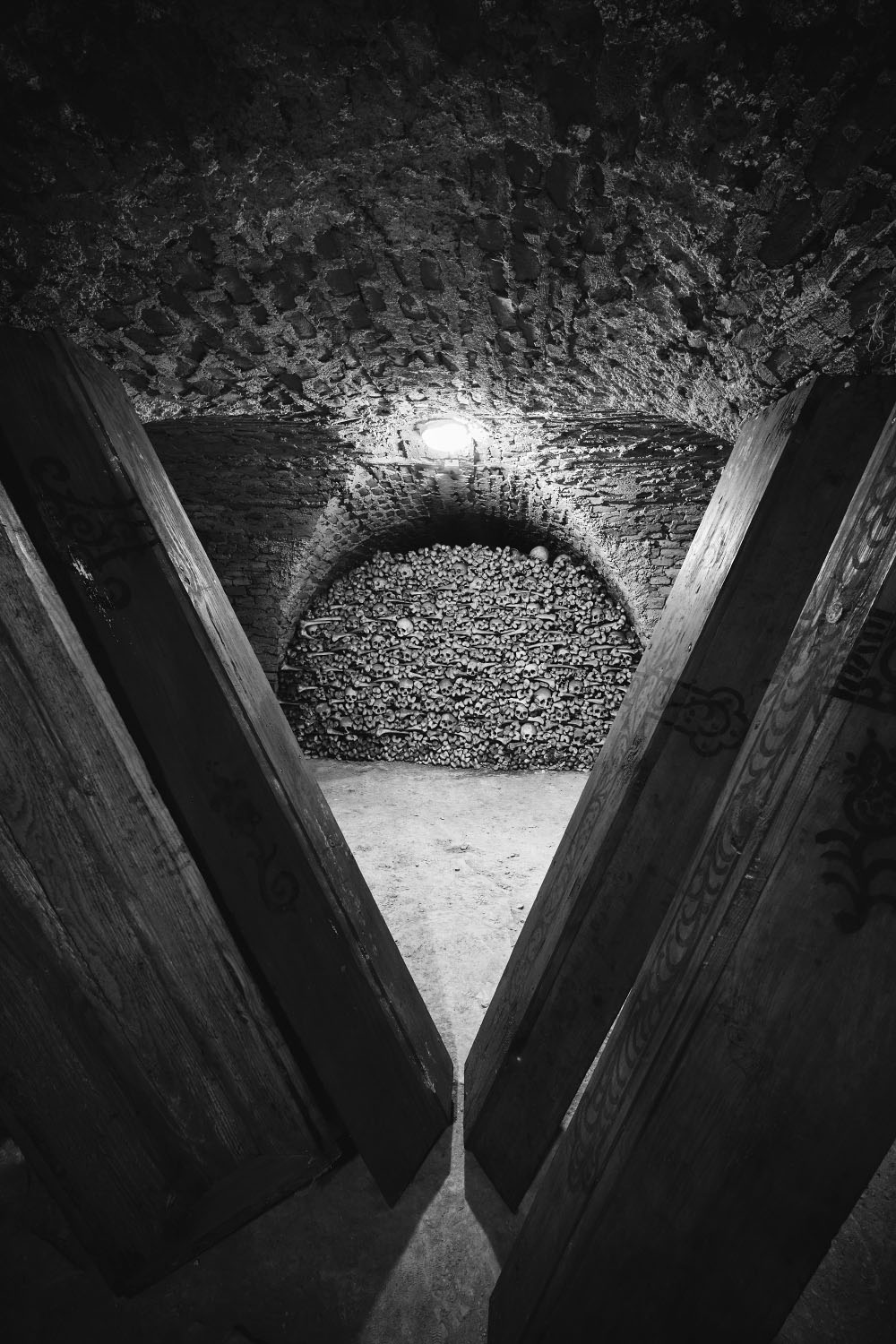
RIGHT: Fuji X-T30 . @9mm . 4.0″ . ISO 250
The Baroque period, with its piety, was literally the Golden Age of ossuaries. Skeletal decorations were created with emotion, splendour, and drama in the spirit of memento mori (remember death).
And some ossuaries also become places of pilgrimage.
The subsequent epoch of Enlightenment and vice versa mean the end of the building of ossuaries and, for many of them, their demise.
After a long period of intensive photography, when my photo archive grew by a number of different ossuaries, the next step came. Publishing a book.
And so, at the end of 2023, a book, Moments of Silence – Czech Ossuaries in Photography, was published, featuring 20 ossuaries (19 Czech and 1 Polish, but with Czech roots). In addition to a series of photos, each ossuary is accompanied by a short brief about its history (in Czech and English texts). I believe that I have chosen diverse and interesting ossuaries for the book, which have the opportunity to introduce this phenomenon to people. So, if you are interested in the topic and the book, you can contact me.
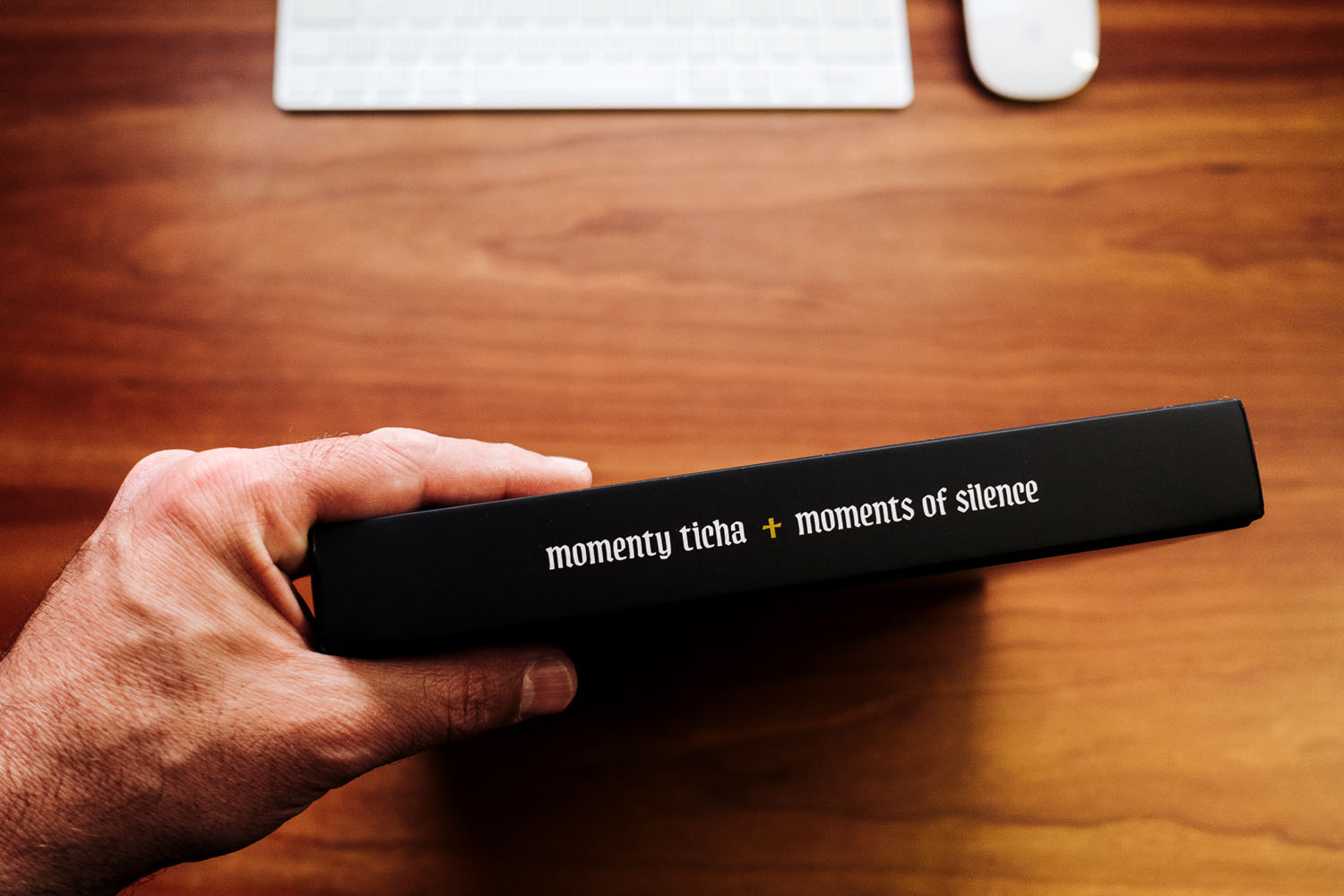
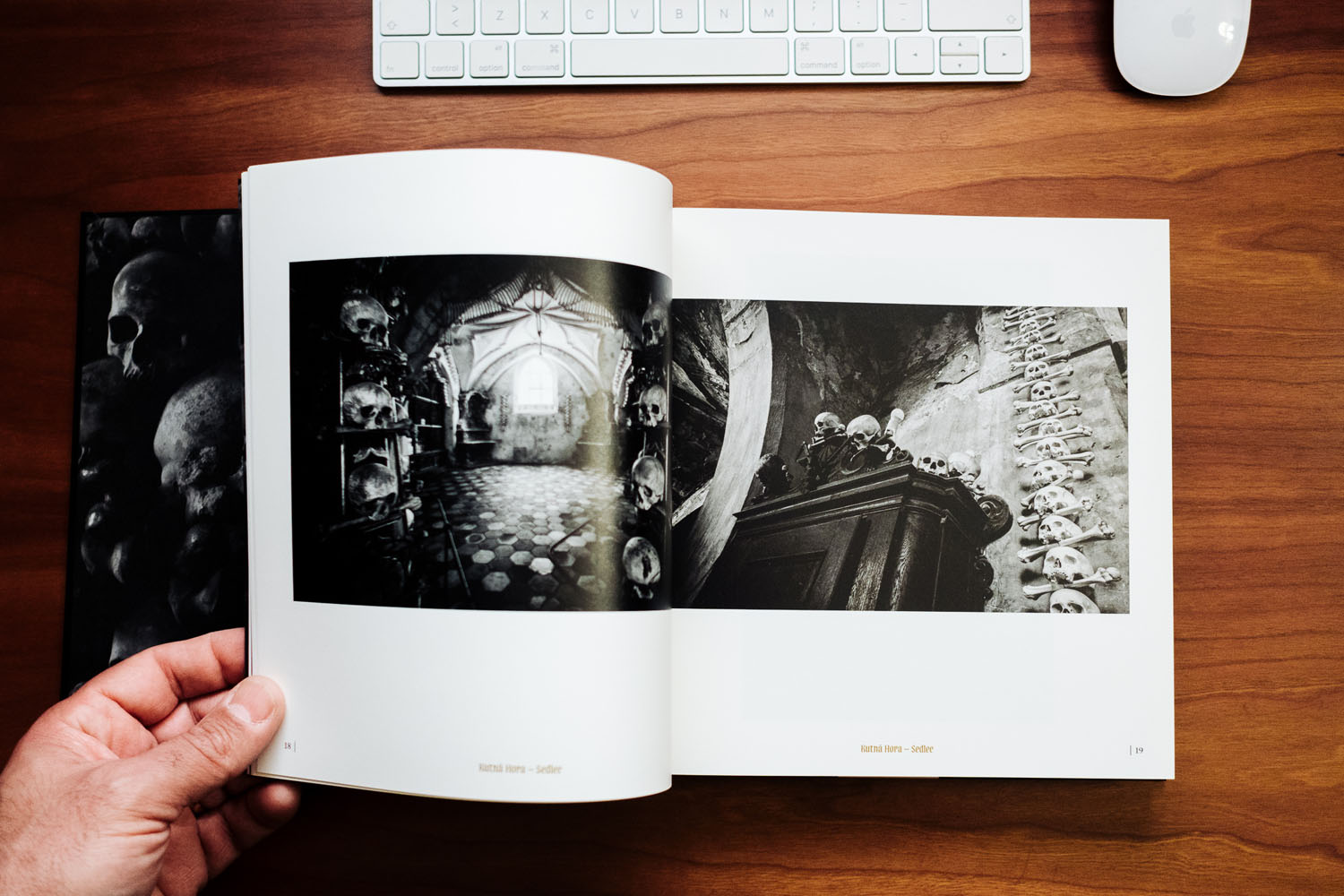
Read the book review: www.fujixpassion.com/2024/03/14/moments-of-silence-book-review/
However, the project continues after the book’s publication. I am still photographing other Czech ossuaries for which there is no space left in the book. I will gradually publish them on the project’s FB page and website. At the moment, I have largely completed my research for European ossuaries, which I am slowly starting to photograph and which should be the subject of the second part of the book sometime in the future.
www.momentyticha.cz/en/
www.facebook.com/momentyticha/

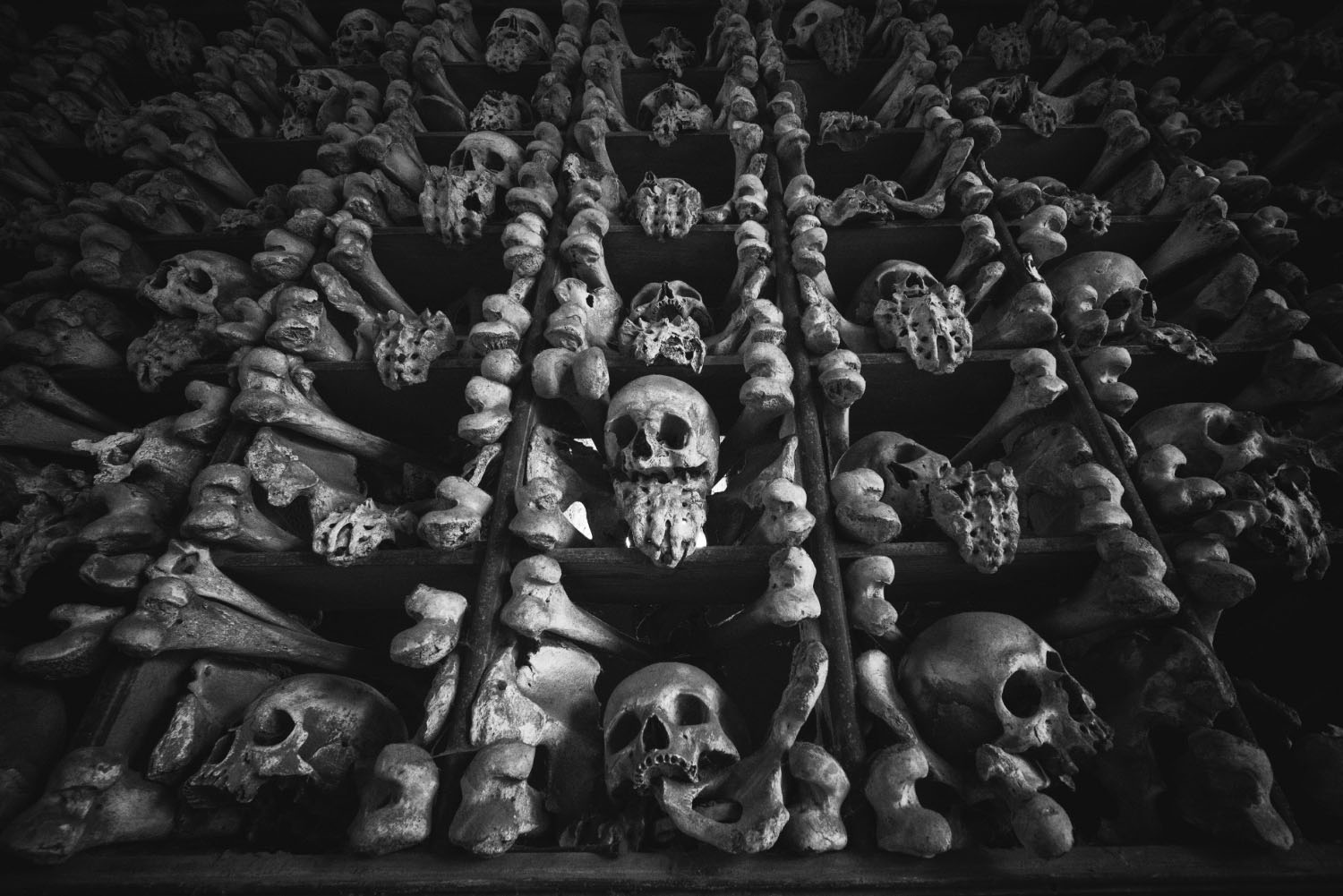
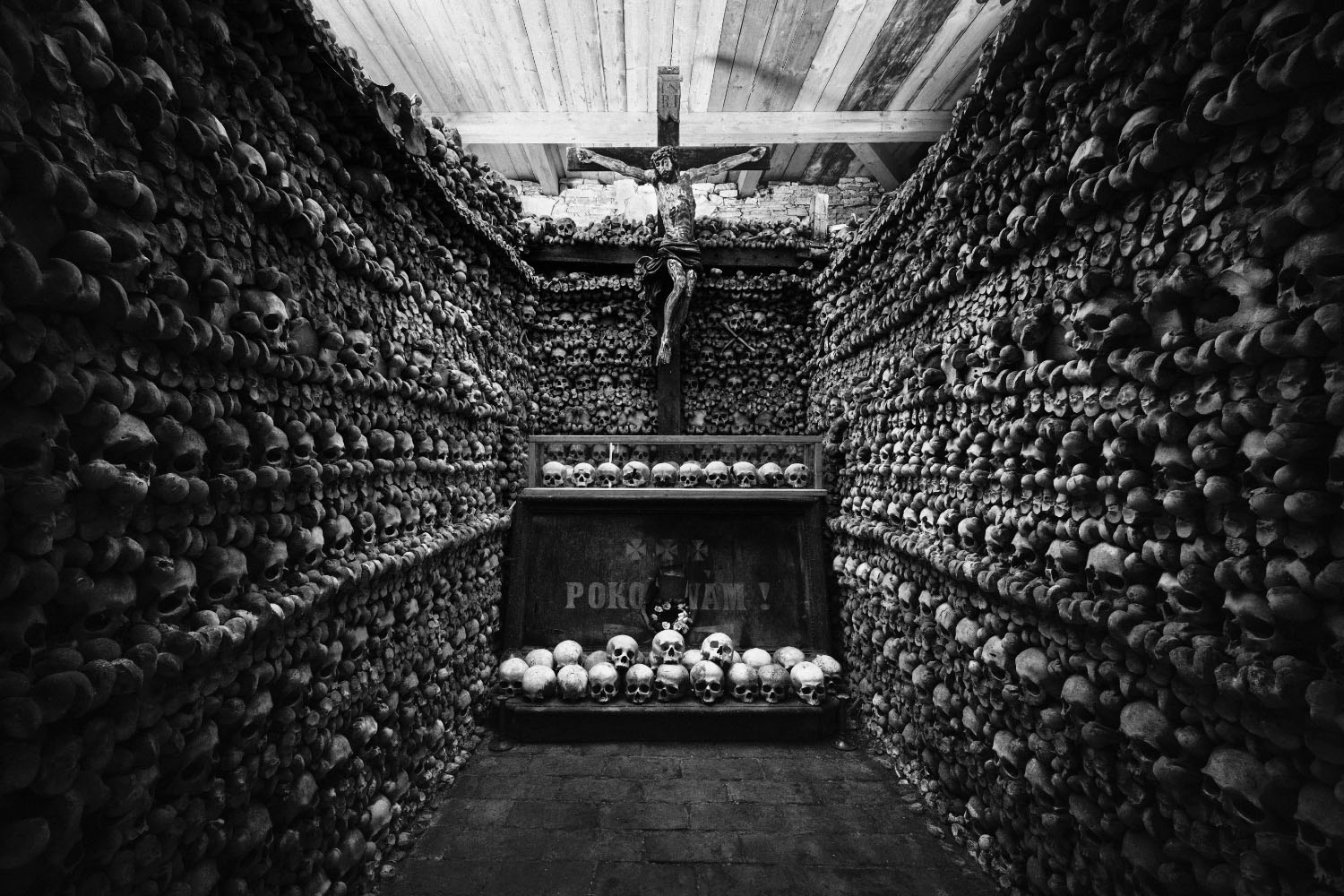
RIGHT: Fuji X-T30 . @9mm . 60″ . ISO 400
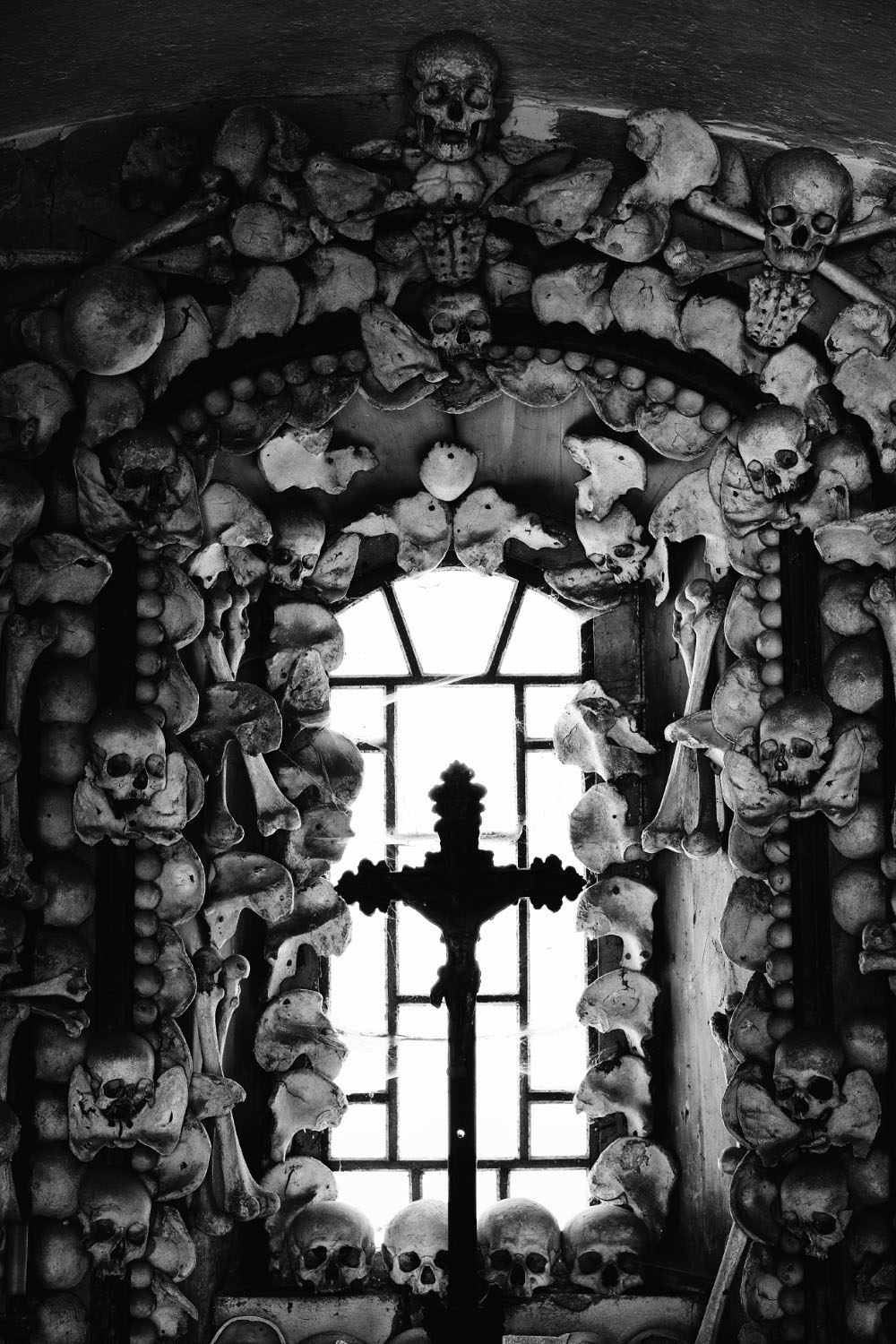
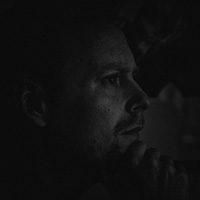
Artist, graphic designer and photographer. In his work he is mainly engaged in black and white photography and intaglio technique – mezzotint.
Most often, he photographs landscapes, urban nooks, abandoned places, and old cemeteries and has been photographing ossuaries for a long time. In 2023, he published a book about Czech ossuaries.
You can see a sample of his work on his FB personal account or at www.miroslavhlinka.cz and the ossuary project can be found at www.momentyticha.cz/en

